Brian Luebben soared to the top of the corporate ladder only to realize he preferred a different view.
The post How to Quit Your Corporate Job and Travel Full-time appeared first on Smart Passive Income.
]]>Brian Luebben had soared to the top of the corporate ladder, landing a prestigious position in a Fortune 500 Sales Organization in his mid-twenties and earning a substantial salary.
But then, a startling truth hit him: he did not want this life.
He didn’t just want financial success, he wanted to quit his corporate job and travel the world full-time with the freedom to shape his life and career as his own boss.
With the success of his podcast, which evolved into his growing media company, Brian turned his vision into reality.
Today, he lives his dream, traveling the world, earning passive income, and pursuing projects close to his heart — like his Action Academy. Brian’s story epitomizes entrepreneurial success fused with personal fulfillment.
Brian recently sat down with Pat Flynn to share his story on The Smart Passive Income Podcast.
Determined to align his career with his ideal lifestyle, Brian transitioned from corporate life to full-time traveler by following this gameplan:
- Determining his ideal vision for the future
- Establishing a solid financial foundation
- Creating content and collecting client data
- Developing a product tailored to his audience’s needs
- Pivoting his business strategy in response to customer feedback
- Generating recurring revenue
- Seeking out growth opportunities for the future

Planning Your Job Exit
Establish Your Ideal Vision for the Future
So how do you determine your next steps after quitting your job to travel? How do you even start to replace a corporate salary? With so many unknowns, there was one thing that Brian was certain of: instead of running away from something, he wanted to run toward something.
This meant crafting a three-year “vivid vision” for both his personal and professional aspirations. By committing his dreams to paper, he gained a clear roadmap.
Here's the picture he painted:
“I wake up in the morning and I can feel the hot cobblestones of this balcony on my feet and I look out and I can see the ocean. I don’t have calls all morning, but in the afternoon I’ve got meetings with my team. I can make money anywhere in the world with a Mac and a mic.”
A Financial Foundation for Full-Time Travel
Now that Brian had a clear destination in mind, he needed to map out the route to get there. His next step, which he calls “building a financial foundation,” involved investing in real estate.
Brian developed a portfolio of single-family rentals, generating enough passive income to cover his living expenses and begin replacing his corporate salary.
Although Brian was able to essentially live for free, he aimed for something greater. Taking a bold leap, he decided to sell his properties, allowing him to “swing for the fences” and focus on his true passions: his podcast and online business.
“What is the worst possible case scenario that happens if you quit your job and you go all in on yourself, right? “You run out of money. Now what happens? You go and get another job. So your worst-case scenario is your present-day reality, right?”
Turning Your Side-Hustle into a Thriving Online Business
Start to Create Content
Now that you’ve established your vision for the future, built a financial foundation, and are willing to take risks to pursue your passions, it’s time to start building your online business. But where do you start?
Brian explains that the first step is to simply start producing content in any format that showcases your skills and interests and see what resonates with your audience.
Brian accomplished this by hosting his podcast, The Action Academy, where he provides insights for people who share his desire — to build a business around their life, not the other way around.
Gather Client Data
To increase his revenue and better cater to his audience, Brian wanted to learn more about their needs. He offered 100 listeners a free 15-minute coaching session each. During these sessions, he asked them about the challenges and obstacles they were facing in achieving their business goals. This approach allowed him to collect a wealth of valuable customer data.
Why offer this free service? According to Brian, many entrepreneurs encounter a common pitfall: they create solutions for problems that don't truly exist. To avoid falling into this trap, Brian aimed to connect directly with his audience to determine exactly what the market demands.
Ready to become your own boss like Brian?
Dive into SPI’s vibrant entrepreneurial communities where you can uncover courses on podcasting, online course creation, and community building — all skills that Brian used to achieve his freedom. Get the guidance and support you need to thrive on your business journey!
Explore SPI's communities of creators and entrepreneurs today.
Join 20,000+ other creators.




200+ Reviews
Create a Product that Your Audience Really Needs
Now equipped with this useful client data, Brian decided to create a course tailored directly to the needs of his audience. He developed a comprehensive 12-week, 52-hour program and reached out to the original 100 clients from the free coaching sessions, offering the course to them at $1,500 each.
Within just 48 hours, Brian made $100,000.
Pivot the Business for Growth
The business you envision for yourself might end up looking different in reality. This is because continued business growth relies on the ability to identify opportunities for expansion and to make adjustments when necessary.
Brian experienced this when he created a Facebook Group for his course participants to connect. Members began forming partnerships and making deals within the group. Eventually, discussions arose about the value of the group surpassing that of the course itself.
Brian recognized this as an opportunity and reassessed his strategy, embarking on a new phase for his business: community-building.
“The key is to just start step after step after step and iterate, change as you take customer feedback, and ask your customer, what do you want?”
Generate Recurring Revenue to Fuel Full-Time Travel
So, what came next for Brian after making this realization? He adjusted his business model to focus on building and monetizing the community. The course transformed into a 30-day onboarding process, now offered for free within the community.
This shift led to community members finding greater success by connecting with peers at similar stages as them or those who had overcome similar challenges. These connections provided valuable guidance and support, helping members navigate their journeys more effectively.
This business pivot also opened the door to recurring revenue for Brian, the key to unlocking full-time travel. Unlike the one-time transactions of individual course sales, the community's annual memberships promised ongoing financial stability and engagement.
Today, the community boasts around 200 active members and is overseen by Brian and a team of five. In its first year, Brian's business is projected to reach $1.2 million in annual recurring revenue (ARR).
“The reason I made that pivot was the course material wasn’t the answer. People were the answer. People have always been the answer.”
Living Life as a Full-Time Digital Nomad
Looking Ahead
Brian's upcoming plans include preparing for membership growth by considering adjustments like expanding his team and distributing responsibilities among his employees to ensure sustainability.
He also plans to introduce a referral program within his community to encourage member engagement and stimulate organic growth.
Additionally, Brian aims to increase his business's visibility and attract new members by creating short-form content. With an Instagram following of over 200,000 users, he demonstrates a strong ability to engage and retain a significant audience.

A Vivid Vision Realized
Brian is now living his initial “vivid vision,” traveling the world as his own boss while continuing to expand his online business. He states that his aim was never to retire and simply relax on a beach somewhere. Instead, he advocates for building a business around something you love: quitting your job to travel full-time, not wander.
When your business is enjoyable to run, revenue and profit become natural byproducts. It’s what he calls “passionate income” as opposed to passive income.
Brian’s central message is clear: there’s no need to postpone happiness. Joy and fulfillment are available now, and anyone can realize and achieve it with the right guidance and resources.
The post How to Quit Your Corporate Job and Travel Full-time appeared first on Smart Passive Income.
]]>A website is the best way to share your brand with the world — here's how to design your creator website for maximum impact.
The post How to Design Your First Branded Business Website appeared first on Smart Passive Income.
]]>If you’re of a certain age—let’s say 35 or older — you probably remember the awe and immersion you felt the first time you spun up Netscape Navigator and visited your favorite brand’s business “website.”
Now fast-forward to this age of AI, Uber, Roblox, Meta, Snapchat, and so much more… And guess what? A website is still the best way to share your brand with the world.
That’s true whether you’re a mega brand or a humble creator, solopreneur, or small business owner. Decades on, a website still provides unparalleled creative flexibility and control over your brand. It’s a place where visitors can learn more about you on your terms. A great website helps you tell your story, build trust, and even create community and fans for life.
Today we’re sharing a primer on branding and website design for online creators and entrepreneurs. We’ll walk you through how to design a website for your brand, whether you’re a creator, solopreneur, or small business owner with a team of employees.
This article won’t function as a step-by-step guide to launching a website or go into too much depth on the topic of branding itself. (For that, The SPI Beginner’s Guide to Branding can help you define your brand’s mission, vision, and more, and decide if it should be a personal brand or a company brand.)
Rather, this is a field guide to designing a website that puts your brand front and center and connects with your target audience.
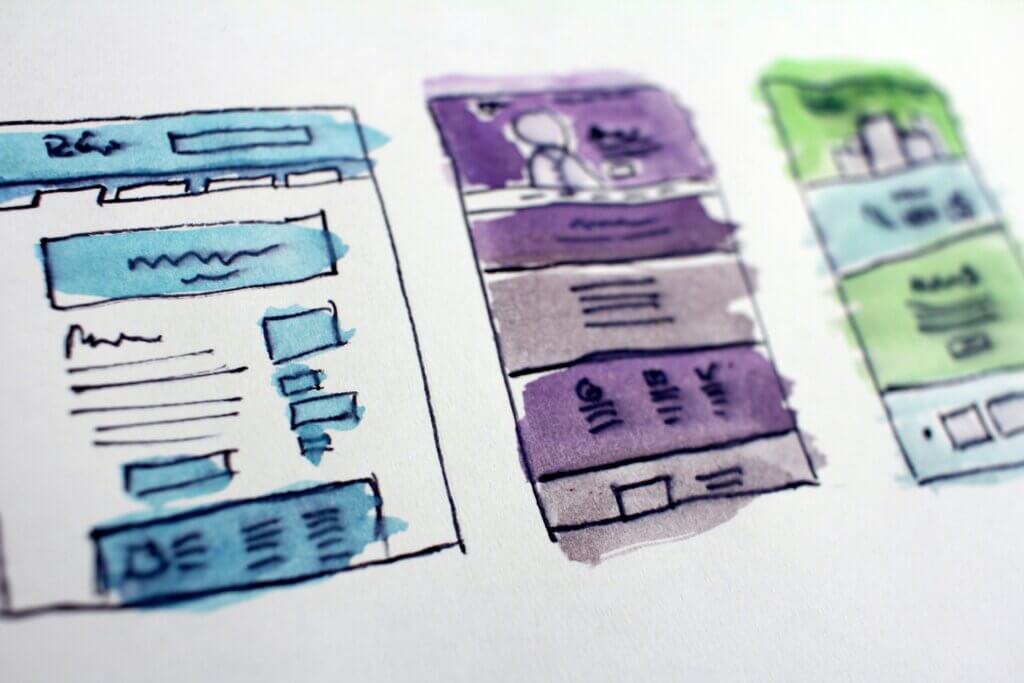
Why You Need a Branded Website
So why a branded business website? Along with your email list, a website is a must-have when you’re starting out building your brand. Like an email list, you have more creative and administrative control over a website than you do your presence on other platforms like Facebook, Instagram, or Etsy. And with the exception of rare service interruptions or security breaches, your site is much less likely to disappear the way a social media account can be banned or suspended.
Your branded website is like your home base, a focal place for shaping your brand image and narrative. At SPI, we recently revamped our website to focus on our core focus of community building and make it cleaner and easier to navigate.
Here’s what a well-crafted small business website can help you do:
- Control your brand: A website gives you full control over how you show your brand to the world, without the creative restrictions of third-party platforms. It also diversifies your online presence, reducing dependence on any single platform.
- Build trust: A well-designed website lends an air of professionalism and legitimacy to your brand, instilling trust.
- Own your content: You own and control the content on your website, reducing the risk that algorithm changes or platform shutdowns will hurt your content’s reach and visibility.
- Make money: You can use your website to promote and sell products and services or run ads.
- Build community: Websites offer a dedicated space for building a community and a following. You can capture newsletter and email-list sign-ups, and even link to your own membership community.
- Showcase your work: Use your website to share case studies, testimonials, and portfolios of your work with your audience.
- Understand your audience: Website analytics provide valuable data on user behavior, helping you better understand your audience and optimize your content to reach them.

Get Unstuck in just 5 minutes, for free
Our weekly Unstuck newsletter helps online entrepreneurs break through mental blocks, blind spots, and skill gaps. It’s the best 5-minute read you’ll find in your inbox.
Free newsletter. Unsubscribe anytime.

Join 135k+
Subscribers

Your Website Should Express Your Brand Personality
When a lot of people hear the word brand, they think logo. And true, a logo is a key part of your creator or online entrepreneur brand — but your brand is also a lot more than just a snazzy graphic. Since your website is your home base, it’s the best place to convey the essence of your brand through the following key elements:
- Clear purpose: Define your unique value and why you exist. At SPI, we’re upfront about our why — our mission, vision, and core values.
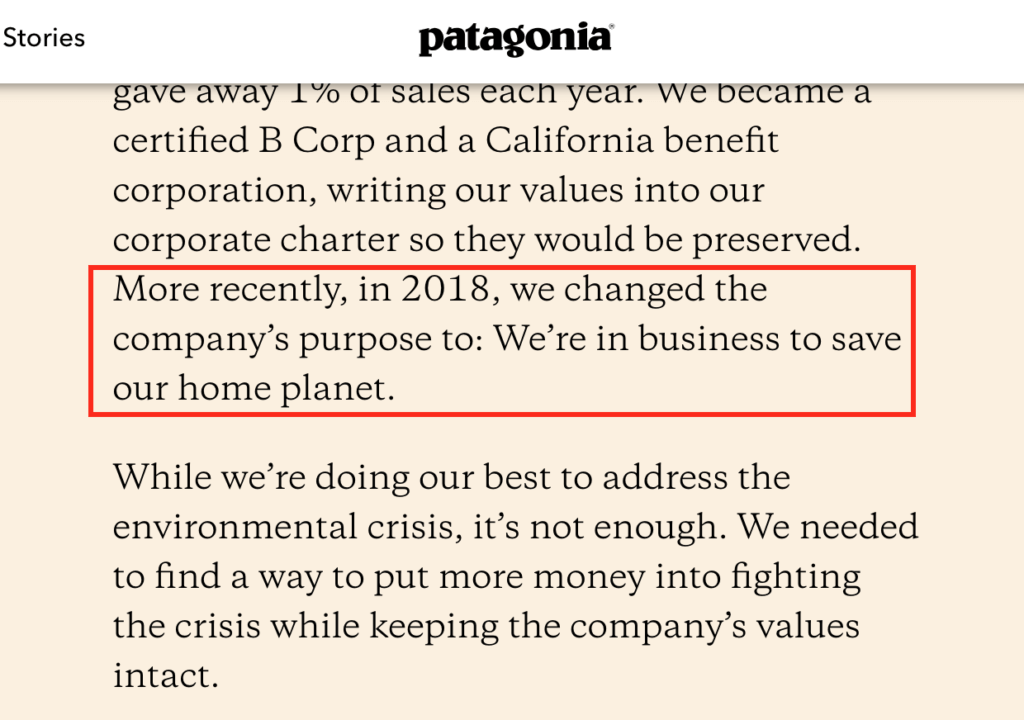
- Color scheme: Utilize a maximum of four brand-reflective colors. Align colors with professionalism; avoid mismatch. Explore color psychology—the study of how colors affect perceptions and behaviors—for guidance.
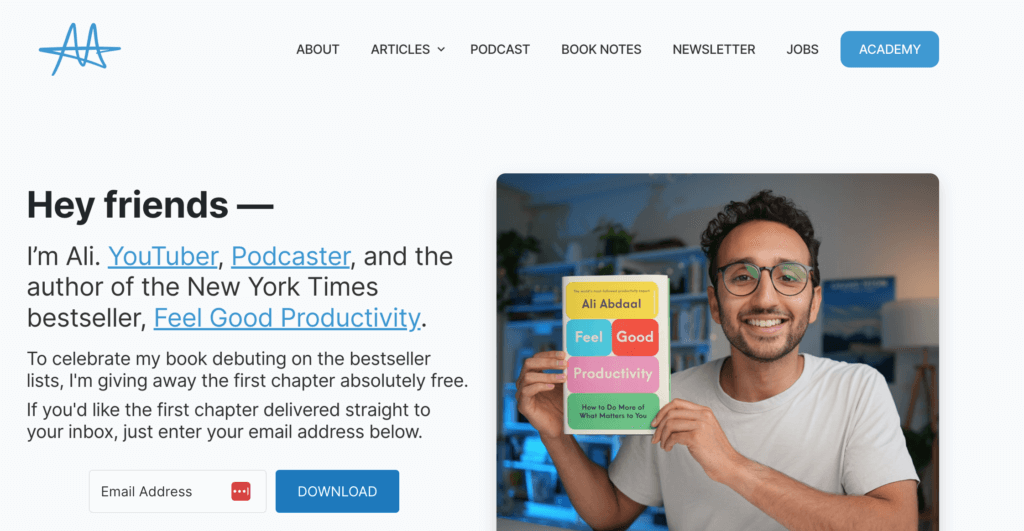
- Tone of voice: Beyond aesthetics, your branded business website needs a distinct voice — a tone that informs all your written content. Adapt your tone to your personality, niche, and audience, keeping it approachable and jargon-free.
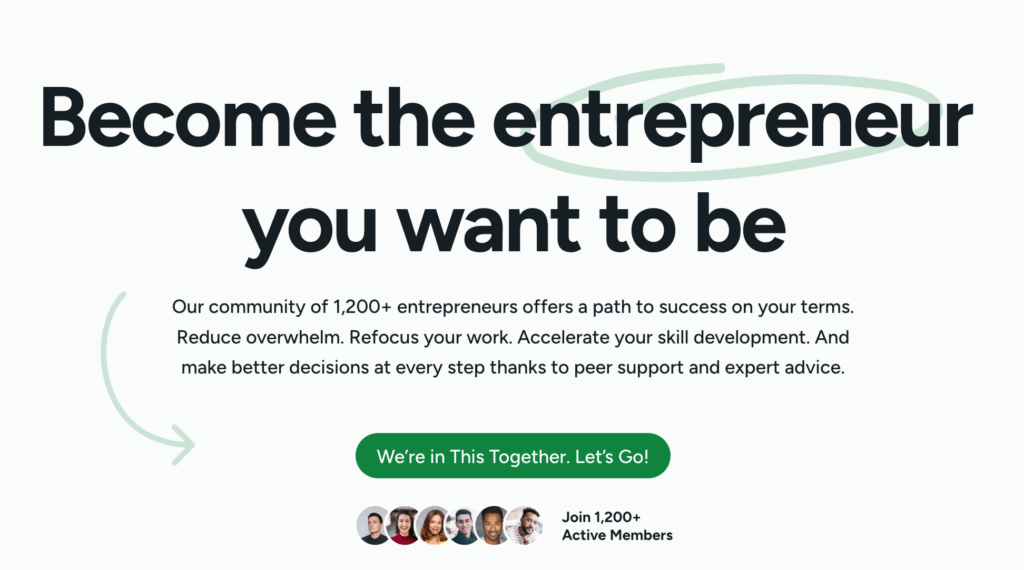
- Tagline or motto: A concise, memorable tagline helps convey your brand identity and value in bite-size form. It’s a little detail that can matter a lot!
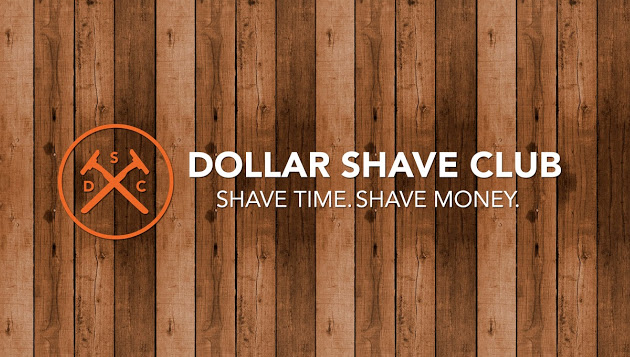
- Signature font: Choose one or two readable fonts that reflect your personality, for consistency across everything you write and to bridge your brand’s visual identity with its written one.
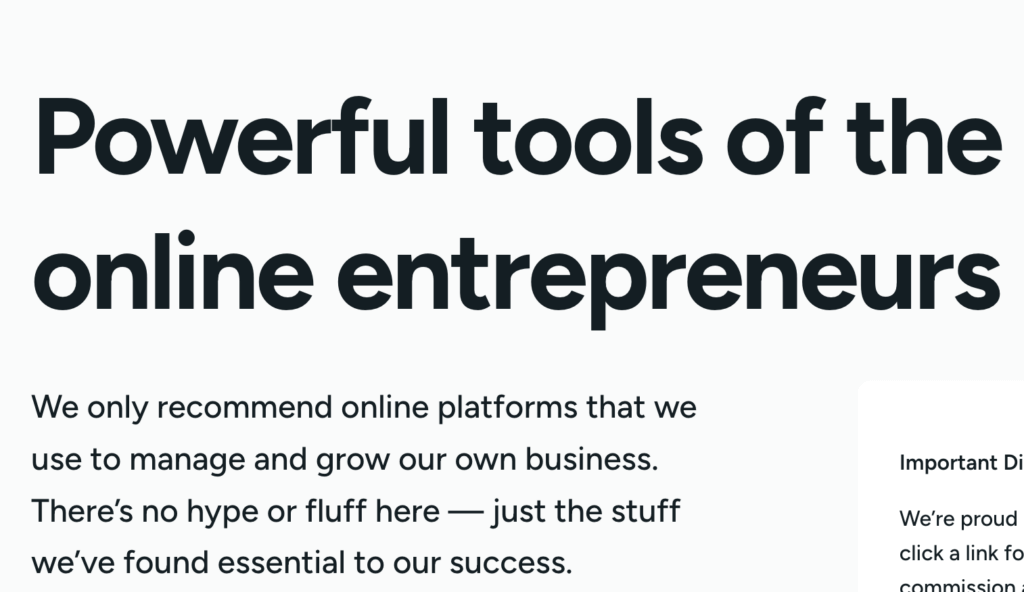
- Unforgettable logo: Last but not least, an eye-catching logo provides instant brand recognition. Consider enlisting a graphic designer for this one.

Optimizing the Visual Experience of Your Online Business Website
For the most part, visitors will experience your website visually, so there are a few more important considerations when it comes to your site’s visual assets. Make sure the images, background designs, and other visuals you use on your site are:
- Relevant to your brand and content: This may seem obvious, but your website visuals should make sense in the context of your brand and the surrounding content. Each visual asset should complement and enhance the content it accompanies and align with your brand's identity, reflecting its values, personality, and messaging.
- Strategically placed: Place visuals purposefully to guide the user's journey and emphasize key messages. Consider the flow of the website and how visuals can enhance storytelling.

- Consistent in style: Maintaining a consistent visual style across all images creates a cohesive and harmonious look and helps with brand recognition. Use those brand colors!
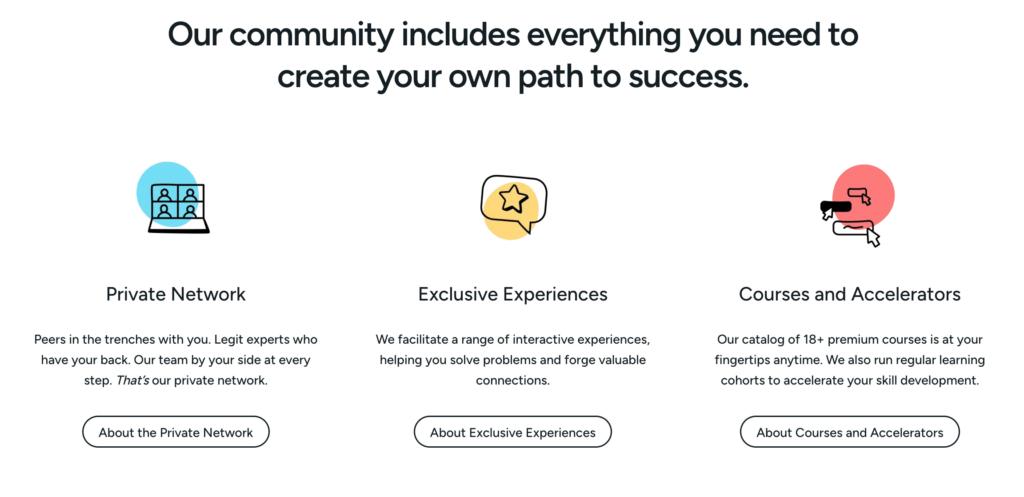
- High quality: Use high-resolution, professional images; grainy or pixelated ones can detract from your brand's credibility.
- Accessible: Not all of your visitors will be experiencing your branded business website visually, so ensure that any visual assets are accessible by adding descriptive alt text to all of your images.
- Optimized and responsive: Visual assets should adapt well to various screen sizes, particularly on mobile devices. They should also be compressed to improve loading times (and search engine rankings).
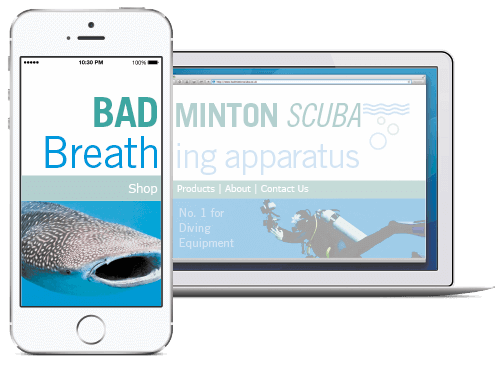
- Legal: All images should be either original, properly licensed, or fall under fair use. Respect copyright laws, and get permission if you need to!
- Timeless: As much as possible, choose visuals that can evolve with your brand rather than trends that might become outdated.
- Human: Human faces and expressions can create a stronger emotional connection with the audience, so incorporate images that feature people.
![Screenshot from the SPI community: "Ready to find [crossed out] join your people and level up?" Smiling faces decorate the page.](https://www.smartpassiveincome.com/wp-content/uploads/2024/03/humans-1024x509.png)
By making sure the visual and written experience of your website is consistent, professional, and aligned with your brand identity and voice, you’ll foster a sense of familiarity and trust with your audience.
A Great Creator Website Needs a Great User Experience: Layout and Navigation
Your website isn’t just a static display; it's an interactive experience for your audience. Once you’ve established the key brand elements your website needs, from your brand’s purpose to its voice, tone, and visual identity, it’s time to start designing the actual site layout.
As you’re choosing a layout, think about what will best convey your brand identity and message while making things as seamless and intuitive as possible for your visitors to navigate and find what they're looking for. Here are some popular layout options to consider:
- Single-Column: Clean and straightforward, with a single column for easy navigation.
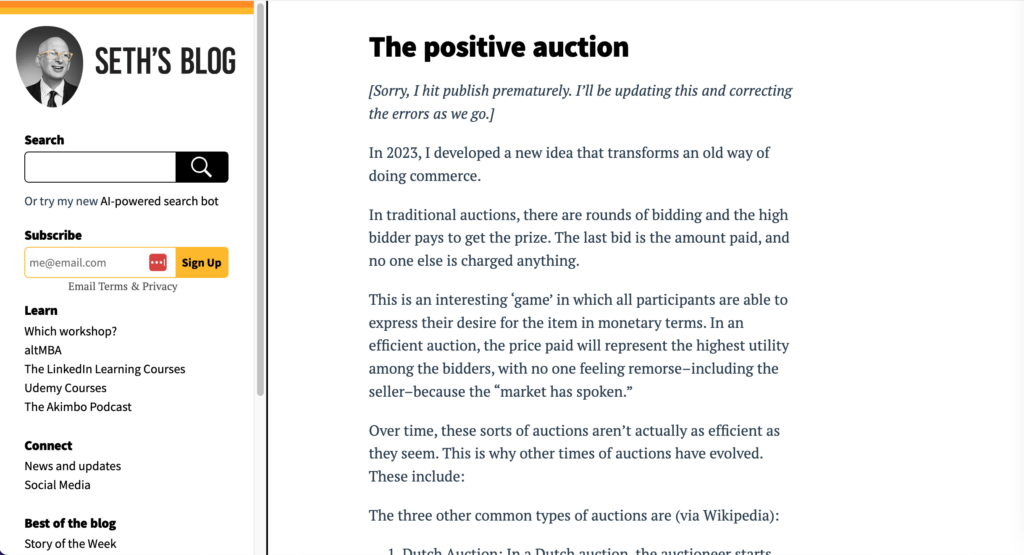
- Grid: Organizes content into a visually appealing grid structure, suitable for showcasing multiple items efficiently, like portfolios or product displays.
- Magazine or Blog Layout: Mimics a magazine or blog with multiple columns — well-suited for content-heavy websites.
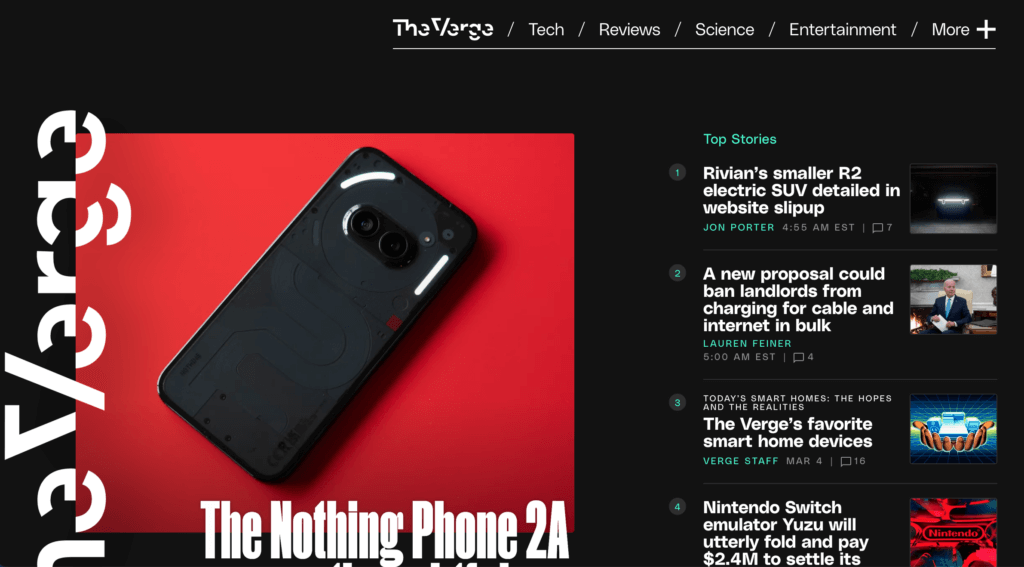
- Hero Image or Video: Features a striking image or video at the top, capturing immediate attention and often used for product showcases or setting the brand tone.
- Split Screen: Divides the webpage into two distinct sections, providing a modern and visually appealing design with room for creative elements.
- Parallax Scrolling: Creates a dynamic scrolling experience with background elements moving at different speeds, adding depth and interactivity.
- Card: Presents content in modular and flexible cards, promoting visual hierarchy and easy organization, suitable for various types of information.
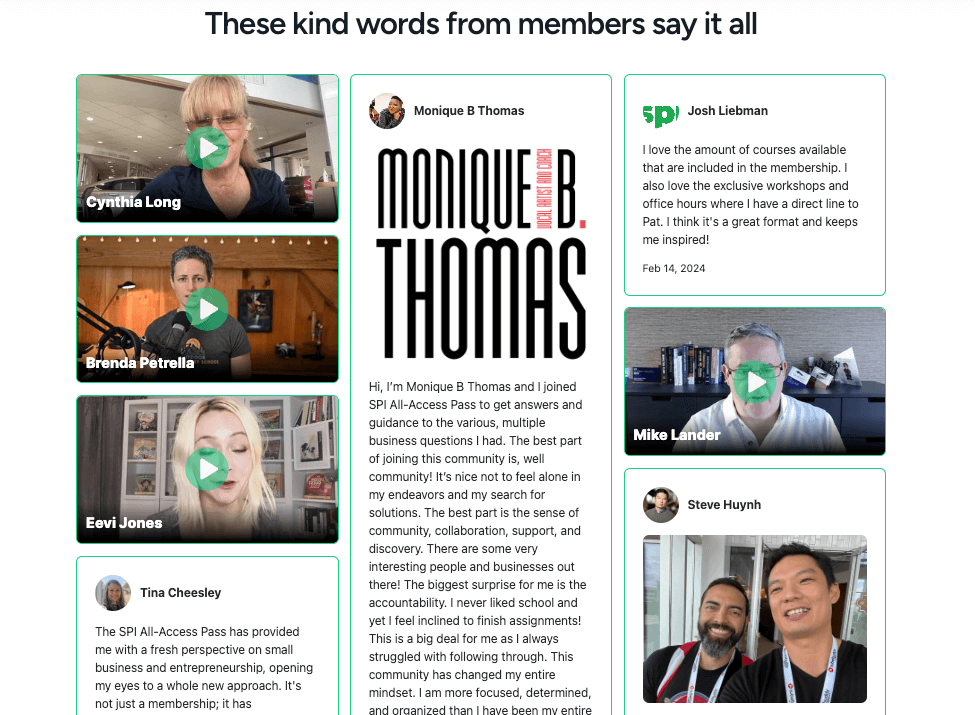
- Full-Screen Background: Incorporates a full-screen image or video background for a visually immersive experience.
A quick note on navigation: Whatever layout you choose, your users’ ease in navigating your site will determine how long they stick around and whether they’ll find what they need—or if they’ll get frustrated and give up. You can also help people navigate your branded website through careful placement and organization of menus and footers.
The Strategic Content Your Website Needs
You’ve figured out your brand’s visual identity and voice and chosen a layout for the site. Now you need to fill it with useful content that tells your visitors who you are, what you do, and how you can help them!
These are some of the key pages to consider for your branded business website—some are must-haves, while others will depend on your business and offerings:
- Home Page: The home page should offer a snapshot of your brand, enticing visitors to explore further, communicating your unique value proposition, and guiding users to key sections of your website.
- Blog: Beyond promoting your products or services, blogs are still a popular way to share valuable content that positions you as an authority in your niche.
- Podcast Page: If you have a podcast, you should definitely have a dedicated page for it on your site. Although your podcast can technically exist without a website, a podcast page can promote your show and help listeners learn more about your brand and offerings.
- Credibility Section: Testimonials, case studies, and press coverage showcase the positive experiences of others, establishing your brand's credibility and reliability and building trust. This content can live on its own page or be placed strategically at different places on your site.
- Product/Service Pages: Each product or service page should provide detailed information, benefits, and a compelling call to action (CTA).
- Brand Story/About Page: Your audience connects with the people and the story behind your online business. Use this page to communicate your mission, values, and the journey that led to the creation of your brand.
- Shop Page: If you want to use your site to sell things, you’ll need a shop page with easy navigation, clear product categorization, and a streamlined checkout process.
Examples of Online Creator and Entrepreneur Branded Websites
For a little inspiration, here’s a selection of great branded business websites created by online creators and entrepreneurs just like you! These folks all happen to be members of our SPI Pro community, which you can learn more about at SmartPassiveIncome.com/community.
Gnome Angel
Ange Wilson’s quilting-based creator business website has a strong, vibrant visual identity based around a palette of pinks and blues and a playful header font. The Gnome Angel value proposition greets you as soon as you open the home page, and as you scroll you learn about Gnome Angel’s resources and products via a “patchwork” design style that evokes a quilt. The “sticky” navigation menu persists as you descend the home page, providing easy access to the rest of the site.
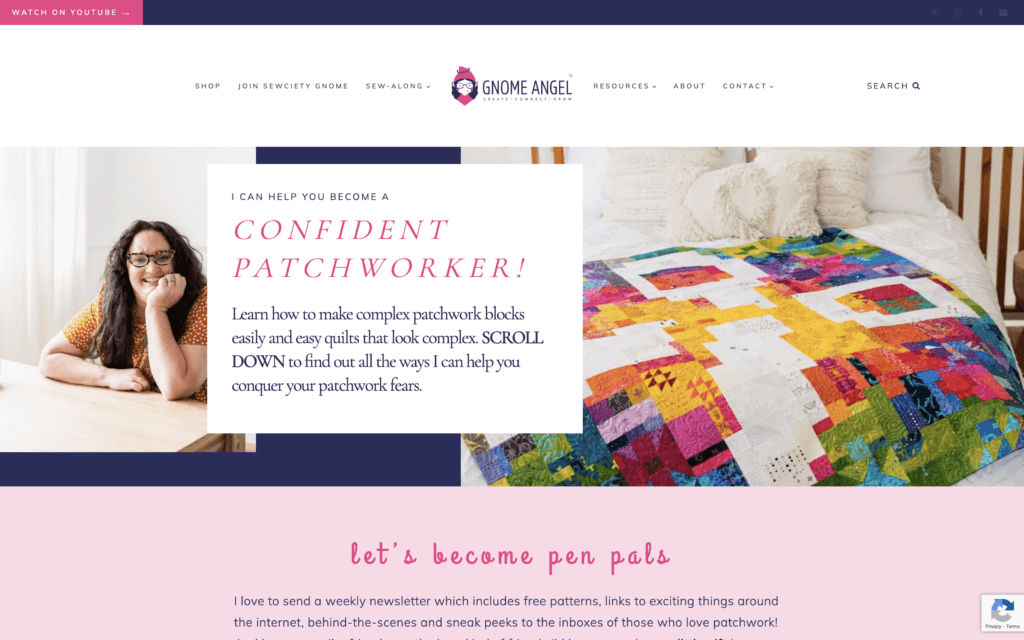
Piscari
The Piscari site is a company brand website with a simple, clean, functional home page that serves as an About page for the company and its founder, Mike Lander, with a link to join the Piscari email list at the bottom. A top nav menu that displays on every page makes it easy to learn more about the company, its services, and other resources. The “Contact Us” button, framed in bold green, highlights the main call to action visitors are encouraged to take.
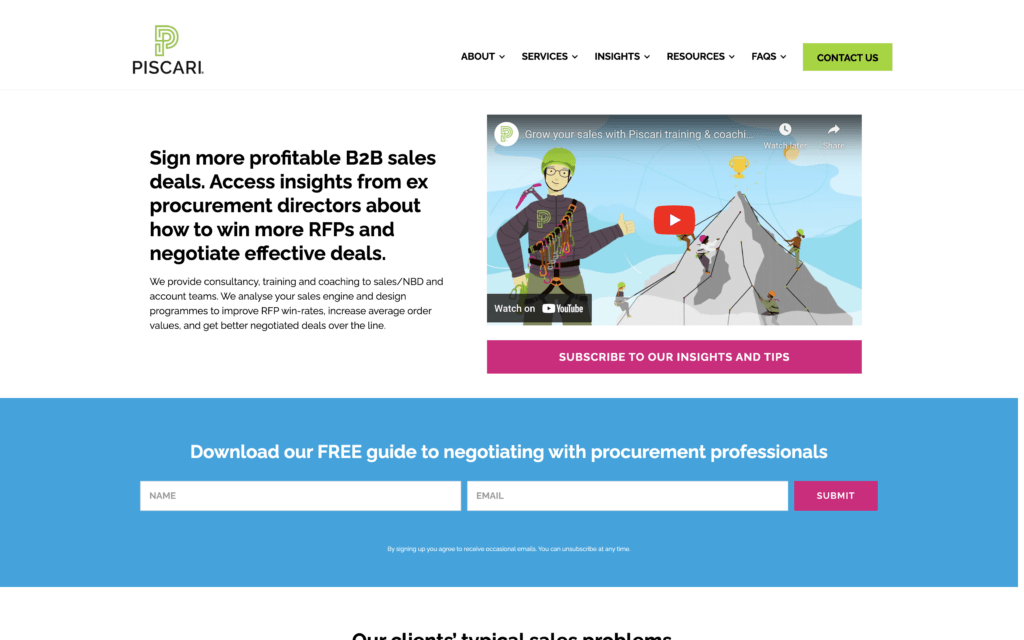
Jette Stubbs
Career and business coach Jette Stubbs’ site introduces her offerings right off the bat, followed by a friendly photo of Jette that humanizes the brand. The simple single-column layout reduces distraction and guides you down the page as you encounter a happy client’s testimonial and learn more about Jette’s services. Graphic elements and images are interspersed throughout, along with subtle font color changes to spark attention. The parallax scroll effect with Jette’s face in the background adds more human dimension and a bit of novelty. A simple top navigation menu is duplicated at the bottom, with links to an About page, Jette’s podcast, and testimonials.
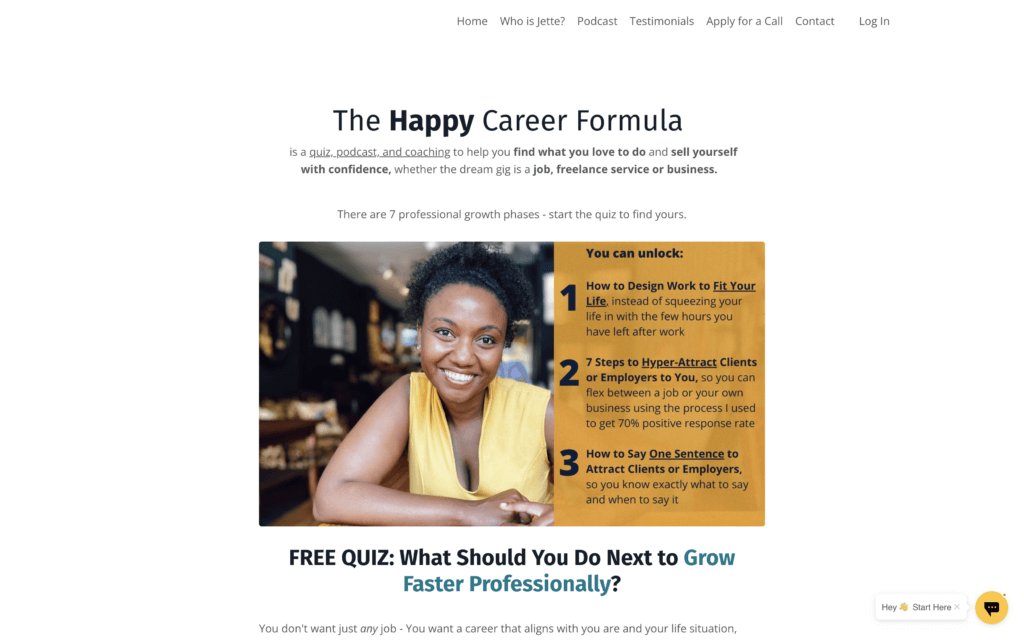
Still on the Fence about Building a Website for Your Small Business?
We’ll end with a few reminders — and by debunking a few common misconceptions about creating a branded business website:
- Yes, you do need a website. Websites aren’t just for big companies, and social media isn’t enough.
- Your website doesn’t have to be complex or aesthetically stunning. Simple, user-friendly designs often perform better, so focus on clarity and functionality above all.
- A website needs attention. Your website isn’t just going to attract traffic on its own. You need to promote it and regularly populate it with fresh, SEO-rich content.
- You don’t have to go it alone. There are plenty of great designers out there who can help you craft a logo and build a professional-looking branded website. (We worked with the good people at Rockbase for our redesign.)
If you’re feeling daunted, don’t! We’ve got all the support you need to start building your brand and designing a killer website to show it off to the world. Check out our site’s Free Resources tab, where you’ll find content for entrepreneurs at any level. If you’re ready to take the next big step in your online business journey, head to SmartPassiveIncome.com/community to learn about our communities for online entrepreneurs. You can learn from others like you who have built their own branded websites, gain access to our full library of courses, participate in live events, and more.
The post How to Design Your First Branded Business Website appeared first on Smart Passive Income.
]]>A simple 6-step goal-setting process to up-level all aspects of your life, not just your business, to focus on you as a whole person.
The post Designing Holistic Goals (The Best Framework to Avoid Burnout) appeared first on Smart Passive Income.
]]>We clinked glasses. The event was finally over, and it was a massive success.
At least on the surface.
Hours earlier, I delivered the closing keynote at a business conference and now, with a drink in hand, I was sitting at a bar with the founder who finally had time to take a breath after months of hard work.
We talked about the future: plans for a bigger and better event next year, revenue goals for our businesses, and the hiring spree he was on to grow his team 3x within 4 months.
He was meticulously detailed and knew exactly what was going to happen and when. Business goals on point.
After about an hour, I was curious and changed the topic:
“What about outside of business? Any big goals with the family this year?”, I asked.
After a quick sip from his 3rd old-fashioned, he said, “Oh, you know. Just making sure we’re all happy and healthy.”
I nodded my head and raised my glass.
Clink.
We continued to chat about random things throughout the rest of the night, and close to midnight we said our goodbyes. He had a debrief with his team the next morning, and I had a flight to catch.
While getting ready for bed, I couldn’t help but think about his answer to my question from earlier and how ironic it actually was.
Underneath the surface, I knew he wasn’t the healthiest of people. He slept poorly and ate worse. At home, things weren’t much better either. People close to his family knew that he and his wife were not doing well, and any relationship with his son was usually just what he could fit into his busy schedule.
Unfortunately, this is not an uncommon story in the world of entrepreneurship. We’re so focused on our businesses and their goals, that other parts of our lives take the backseat.
We can become so specific with our business goals, yet when we’re asked about our personal life, it’s just a generically broad answer that’s more akin to “I’ll eventually get around to it, someday.”
That’s not how it should be.
Since 2011, ever since I caught myself falling into the same trap, I made sure to never let the business become the center of everything in my life again.
Rather, the business is one important part of a much larger whole. Each part is equally important, and each part deserving of time and attention to real, specific, and measurable goals.
[Full Disclosure: This article contains affiliate links. As an affiliate, I receive compensation if you purchase through these links, at no extra cost to you. You can read my complete disclosure statement here.]
The 6-Part Framework for Holistic Goal Setting
Inspired heavily by Michael Hyatt and his Best Year Ever program, I’ve created my own 6-step process that I run through every year to continue to up-level all aspects of my life, not just the business.
I’ve taken Michael’s program every year since it launched in 2012. Unfortunately, it’s no longer available as an online course. However, I do recommend Michael’s The Full Focus Journal, which coincides with the teachings of Best Year Ever. It’s wonderful.
My framework is a light adaptation of his program, and he deserves full credit for it.
Here’s the breakdown:
Part 1: What Do You Want?
Part 2: Why Do You Want it?
Part 3: Create Your Top 3 Goals for 2024
Part 4: Next Steps
Part 5: What’s the Trigger
Part 6: Who Will Support You?
—
To help you through this process, download our 2024 Goal Design Workshop Workbook. Feel free to download the worksheet, and please consider joining our All-Access Pass to get access to all of our courses, workshops, and a community to help support your work.
Part 1: What Do You Want?
The first step is to break down your life into more than just business, but other aspects of life that are important to you.
Emotional, intellectual, physical, relational, business, hobbies, and financial are a few categories you can add to the list, and you can add even more if you’d like.
From there, within each category, what might you hope to one day achieve within that category?
It doesn’t have to be a goal that has to be achieved within the next year, and it doesn’t have to be specific either. You can write down more than one, too.
This exercise simply gets you thinking about what you really want. Think deeply about these things, because they will influence the decisions you make later.
What’s interesting is that each year I do this exercise, much of what I want has changed or morphed in some way. This is why doing this exercise is important every year because we change, circumstances change, and goals should change accordingly, too.
Part 2: Why Do You Want It?
“Vision without action is a dream. Action without vision is a nightmare.”
– Japanese Proverb
It’s important to know the WHY behind each of the aspirations you wrote for each category in Part 1. Without the WHY, there will be no drive.
Everything needs a purpose, or else why do anything?
This exercise helps you get to the root of what your actions will be, and can help motivate you when taking action is tough, or if you come across a hurdle.
Part 3: Create Your Top 3 Goals for 2024
Let’s start with creating 3 specific SMART goals for the year that support 3 of the aspirations from above (from 3 different categories).
Why 3?
We want to narrow our focus for now and move forward through the rest of the exercises sooner. After you finish with 3, go back and run through the rest of the exercises with more.
For each one that you choose, convert each aspiration into a clearly defined SMART goal or habit to work toward this year.
What is a SMART goal?
A SMART goal is:
S: Specific.
Get clear and as specific as you can.
Bad example: I will go to the gym as much as I can.
Great example: I will go to the gym 3 days a week and exercise for at least 45 minutes each time.
Bad example: Stop wasting time in my company.
Great example: Reduce the number of meetings to just twice per week for my employees by the end of Q2, 2024.
M: Measurable.
You cannot track and improve what cannot be measured. Tracking is an important part of goal setting so you can see how far you’ve come toward your goal and it enables you to adjust if needed.
If you have a goal and you’re not quite sure how you’d be able to tell whether or not you’re on your way, then it should be reworked or re-worded.
A: Attainable.
Your goals need to be realistic and attainable. This may be the trickiest because you might lean toward making your goal a little easier so that you can ensure you can achieve it.
Set your goals too low, however, and you aren’t going to achieve or grow much.
Use common sense here.
I love basketball and use it as a sport to stay active, however, if I set a goal to join an NBA team this year, that’s realistically not attainable at this age, my height, and of course, my skill level. (The gentlemen I play with can definitely attest to that, lol.)
R: Risky
The ‘R’ in SMART goals usually stands for Relevant, which is an important one – you want to make sure these goals matter to you, obviously. And I think this is here so that we don’t just place random goals that don’t matter on our list, but in general, especially if you follow this framework, all goals you write down will be inherently relevant, so I decided to use one of Michael’s R’s here in its place: risky.
By risky, I don’t mean dangerous or super consequential. Risky is a word used to ensure you don’t include goals that are “too easy”. There is a risk that you might not achieve it.
Adding a bit of risk makes your goal a little more interesting and potentially more rewarding, too.
T: Time-Based
Having a set day or time included with your goal is what ultimately makes this entire system work, and it can help you create a deadline that drives actions today.
All goals must include a time, whether a month and date to achieve said goal, or a time frame to integrate a habit within.
Part 4: Next Steps
This is simple but powerful.
For each of the goals or habits you’ve written down, write down what the next steps are. From where you’re at right now, what’s the one next thing you need to do to get on your way toward those goals?
For example, I have a hobby-related goal: to compete in four kayak bass fishing tournaments by the end of the year. My first step? Sign up for the SoCal Kayak Fishing Club so I can register my name and begin to add the tournament dates to my calendar.
Once you do this, the momentum begins.
Part 5: What’s the Trigger?
For each/goal or habit, write down a trigger that will activate that goal. This is a strategy exercise to give yourself the best chance to keep up with your goals throughout the year.
For example, in James Clear’s book, Atomic Habits, he says that if you want to get into the habit of running each morning, remove as much friction as possible to make that happen. Set your running clothes by your bedside the night before and make that a part of your bedtime routine. When you wake up in the morning, you’ll see the running shoes ready for you right there by your bedside.
Steve Kamb from Nerd Fitness talked about something similar on his way to learning the guitar. Instead of just putting his guitar in the corner of his living room, he put a guitar on a stand at the end of his hallway between his bedroom and kitchen so that every day, for multiples times a day, he would be within arms reach of his guitar and be reminded to practice more.
Perhaps it’s a sticky note next to your computer or an alarm on your phone. We all know life gets busy, so create a trigger to stack things in your favor and actually make them happen.
Part 6: Who Will Support You?
This one seems to hit home for many because we often don’t realize there are people in our lives that will champion us — people who will be there to root us on and hold us accountable.
Write down someone who comes to mind who you can call on for support with each of the goals you’ve written. They don’t need to coach you through the process (although they could if they’re qualified), you just need to realize there are other people you can rely on when you might need help.
A business colleague, a member of a community you’re a part of, a friend, a co-worker, a spouse, or even one of your kids. Share the goal with them and ask them to just know that this is something you’re working toward. Tell them that you believe just them rooting for you will help. You’ll be surprised how well this will work.
Sometimes they can provide direct help, but even the fact that they’re there to hold you accountable can get you to do the thing, whatever the thing may be.
—
I hope this has helped you start thinking about your goals differently, in a way that goes beyond your business and revenue goals — this is about you as a whole person. There are so many more aspects of your life that are important, and they deserve your time and attention, too.
If you’d like to connect with other entrepreneurs who are available to support you through your business journey, and if you’d like to get access to our library of business courses and training workshops, please consider joining the SPI All-Access Pass. Community-powered courses are where it’s at, and we’re taking the lead in this industry — we know this is the best way to offer service and help others.
Click here to check out the All-Access pass and join hundreds of entrepreneurs who are in it just like you, and for all the right reasons, too.
Cheers, and best of luck to you. Here’s to an amazing 2024!
The post Designing Holistic Goals (The Best Framework to Avoid Burnout) appeared first on Smart Passive Income.
]]>We embraced the 4 day work week at Team SPI and we aren't looking back.
The post The 4 Day Work Week Is Here to Stay (Don’t Get Left Behind) appeared first on Smart Passive Income.
]]>The shift to a 4 day work week has been gaining momentum since 2022, and for good reason. As a solution for people struggling due to pandemic-related stress, workplace stress, overwork and burnout, and the pressures of daily lives, 4 day work weeks can be part of the answer.
And 4 day work week experiments are no longer occurring in a vacuum by progressive companies. CNN named it one of the nine most important new ideas in business. Globally, national governments have even sponsored trials of 4 day weeks.
And 4 day work weeks don’t just impact employees’ well-being, studies have shown there are social, economic, and climate benefits, in addition to a positive effect on the company’s bottom line.
In this post, we'll define the 4 day work week, detail the positives, and share our own experience adopting this model, including poignant advice from our CEO to companies hoping to emulate our example.

Compressed vs Reduced 4 Day Work Weeks
To be clear, we’re talking about a reduced 4 day work week.
A 4 day work week can be described in two ways: compressed and reduced. A compressed work week divides a 35+ hour workload over four days with the same salary and benefits as a traditional five-day work week. A reduced work week removes eight hours from the employee schedule, reducing total working hours to 32 per week over four days with the same salary and benefits as a traditional full-time position.
The 4 Day Work Week Is Undeniably Positive: for Us and the Planet
Research conducted by the non-profit organization 4 Day Week Global shows the clear benefit of a 4 day work week model. The organization studied 33 companies in 6 different countries that decreased their employee’s workload to four days (32 hours a week) during a six-month trial. The experiment questioned whether employees could be as productive in 20 percent less time at the same pay. The results were astonishingly positive.
Companies revealed a revenue increase of 8.14 percent during the trial, and an incredible 37.55 percent increase compared to the same six-month period the previous year. New hires increased by 12.16 percent over the course of the trial. Perhaps even more incredible, these results came during the “Great Resignation,” a time in 2022 when workers were quitting their jobs at record rates due to burn-out, desire for a better work-life balance, and feeling that their jobs weren’t meeting their expectations.
Employee satisfaction was at an all-time high during the trial, with 96.9 percent saying they definitely wanted to continue having a 4 day work week. They reported a decline in stress and burn-out, increased productivity, and higher job satisfaction. Employees were able to spend more time with family and friends, sleep better, and increase time spent exercising.
A reduced work week has also proven significant environmental, economic, and social benefits. Carbon emissions decrease with less commuting and employees socialize more with a three-day weekend. In turn, this supports businesses and, in some countries, desired population growth. Japan, for example, has historically had an intense working culture: “karoshi,” a term meaning “death from overwork,” was coined in the 1970s. However, the country recently released new guidelines to encourage companies to make a shift to a 4 day work week in an effort to encourage a healthier work-life balance. Japan hopes that anticipating the extra day off will push citizens to boost the economy by spending more money, and even lead to increased marriage and birth rates.
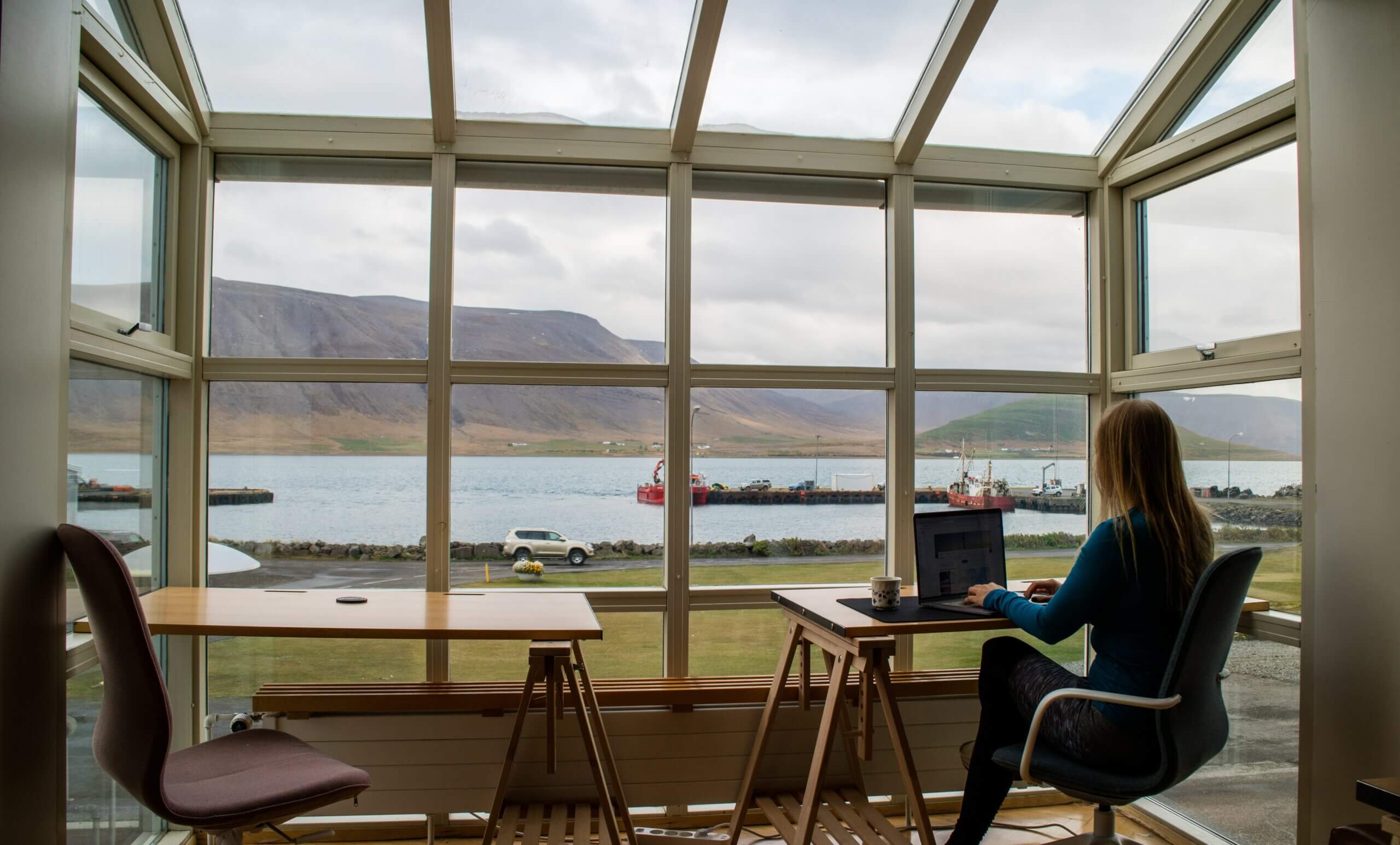
Why We Jumped On Board the 4 Day Trend
As a result of the pandemic, many companies are putting work-life balance front and center, and a 4 day work week can be a huge part of that effort. With happier, well-rested employees, companies see an increase in profits and productivity, and giving employees more flexibility — reduced hours and remote/hybrid work arrangements — helps retain the team members they’ve invested time and money into training. As evidenced by job sites like 4DayWeek.io, employee demand for the 4 day work week is high.
At SPI, a 4 day, reduced work week was implemented in the beginning of 2022 during a trial period. The results from the team aligned with the global study cited above. Employees reported they were more motivated and productive, completed tasks on deadline, supported each other more, and felt a stronger sense of connection within the team. Employees also took the extra time to pick up new hobbies, exercise more, complete housework ahead of time, and have more quality time with family and friends. Unsurprisingly, we’ve decided to keep the 4 day work week in place permanently.
“Don’t Rush It”
The 4 day work week has undeniably been a home run for Team SPI. So what would we recommend to other companies hoping to follow suit? Here’s what our CEO, Matt Gartland, had to say about it:
“As Uncle Ben famously said to young Peter Parker, ‘with great power comes great responsibility.’
“The 4 day work week is a great power for the modern workplace. It's a genuine competitive advantage as well as an embodiment of important cultural values. It's undeniably the future of work, especially for those of us who run remote-based companies with distributed teams. It can foster closer togetherness within the team. It can nurture more commitment to the mission of the company at large.
That's all really awesome. It's also really serious.
The opposite of those outcomes is possible with a hasty implementation. Details are necessary to define and align on expectations for how the 4 day work week is going to actually work as well as how its effectiveness is going to be evaluated. Here's the big one: Under what conditions could the 4 day work week be deemed to be ineffective and thus subject to rollback?
At SPI, we devoted a lot of time and energy to defining our take on a 4 day work week. The program details were the subject of active conversations with the team. Those same operating details were codified formally into our governing employee handbook. This process took months. This is how you treat this awesome opportunity with the respect it deserves.
So lean into it. It's worth it. Just don't rush it.”
Employees are happier to work for a company where they feel valued and appreciated. It’s unlikely that the world will make the shift to a 4 day work week overnight, but companies are realizing that to retain employees and attract new staff they need to embrace a healthier work-life balance. The momentum behind the 4 day work week continues, and we’re keen to see what positive, compounding effects it reveals.
The post The 4 Day Work Week Is Here to Stay (Don’t Get Left Behind) appeared first on Smart Passive Income.
]]>The proven 8-step sponsorship wheel that will help you land consistent, well-paying brand deals allowing you to finally go full-time with your creator business.
The post How Creators Make Consistent Income with PAID Sponsorships appeared first on Smart Passive Income.
]]>Getting that first paid sponsorship is one of the most rewarding moments you’ll ever experience as a creator.
It’s also the first step in your journey towards financial freedom and building a life that you’re excited to wake up for.
Just imagine … you get to work with brands you love, connect your audience with amazing products and services, and make a ton of money in the process!
If you’re a creator, an influencer, a podcast host, or a newsletter writer — sponsorships can and should be a critical pillar to help you build your business.
But the problem most creators face when arranging sponsorships is unpredictability.
Whether that’s getting lowball rates from brands or even just not knowing with certainty where the next partnership is coming from, figuring out your sponsorship strategy can be kind of hard.
Most creators assume the process looks something like this:

But what if I told you that the process of working with brands does not have 3 steps — it actually has 8?
If you’re not conscious of these 8 steps, you’re never going to lock in long-term partnerships (which should be the goal)!
You might have landed a few lucrative deals over your creator career, but you want to be hitting those every month, right?
But the good news is this:
The only thing between you and consistent, predictable sponsorships is the right system.
Introducing the Sponsorship Wheel.
The 8-Step Sponsorship Wheel
The Sponsorship Wheel is a proven 8-step, rinse-and-repeat system that if implemented with a long-term mindset, will help you land consistent, well-paying brand deals allowing you to finally go full-time with your creator business and build the life you want.
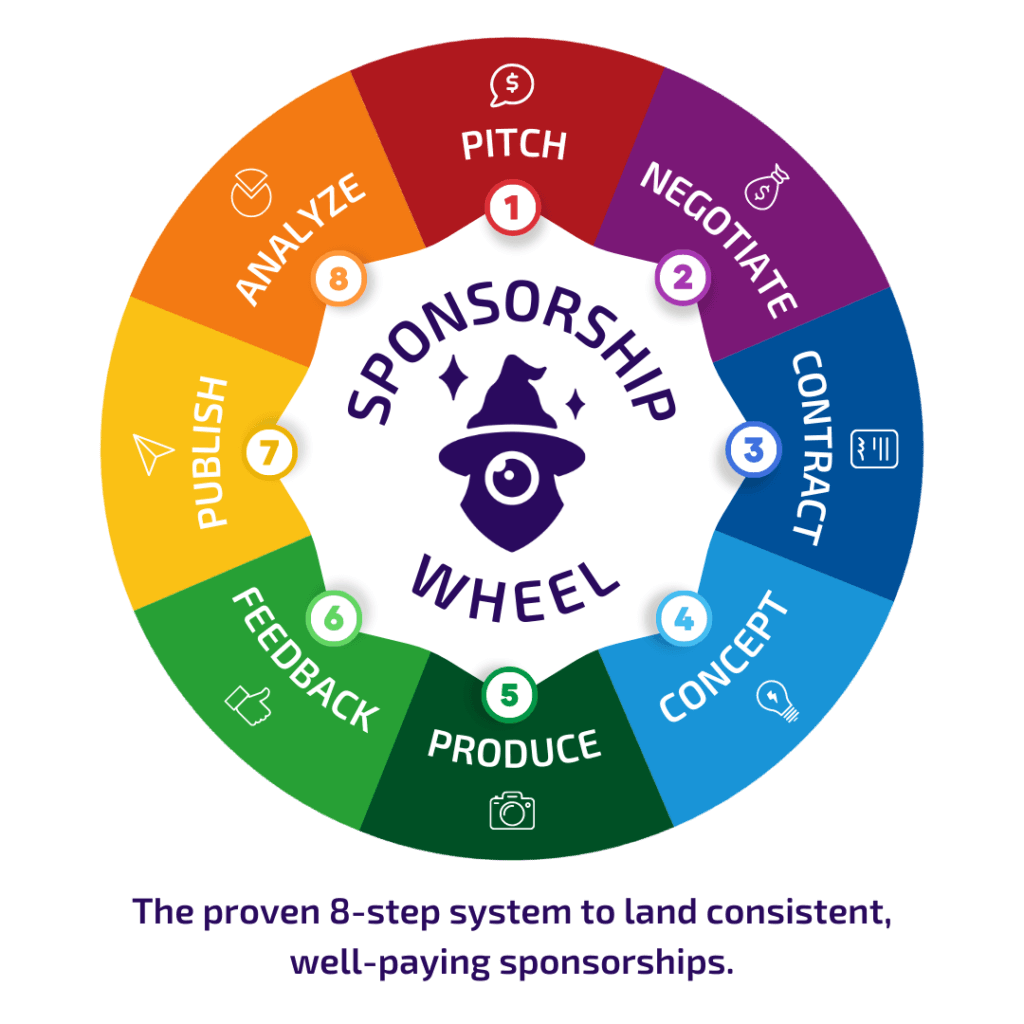
At its core, the sponsorship wheel is a system for tracking what stage your various partnerships are at. The number one mistake I see creators make is taking their foot off the gas too soon.
Just because you’ve signed the contract doesn’t mean you can rest on your laurels. Just because you’ve submitted the assets to the brand doesn’t mean it’s time to put your feet up.
It’s on you as a creator to keep the sponsorship wheel turning (especially after you hit publish).
But in order to do that, you first need to understand the 8 steps, so let’s break it down.
Step 1: Pitch
This is the phase where you're reaching out to a brand cold to propose a collaboration or a brand has reached out to you inquiring about a partnership.
When reaching out to them, your pitch needs to follow what I call the ROPE method:
- Relevant (to any current campaigns they’re running or have run in the past)
- Organic (can be tied back to work you’ve already published)
- Proof (shows how you’ve helped another brand achieve results)
- Easy to execute (when they say “yes”)
Keep this in mind during your pitch. Don’t write three paragraphs telling them how much you love their brand and have always dreamed of working with them. That won’t cut it because it’s exactly what everybody else is doing.
But what about when a brand reaches out to you?
It’s important to remember that just because they did doesn’t mean you can phone it in and expect that they’re 100 percent committed to working with you.
They probably reached out to a bunch of other creators in your niche too.
So it’s up to you to pitch them on why they made the right call in emailing you, and why you could actually go above and beyond for them, such that the brand should pay you 2-3x what they originally had in mind.
But what about when a brand ghosts you after your pitch?
If you want to see actual results, I recommend you do no less than four follow-ups.
- Follow-up 1 (If no response, 5 days after the initial cold pitch or initial response to their inbound inquiry)
- Follow-up 2 (If no response, 6 days after Follow-up 1)
- Follow-up 3 (If no response, 7 days after Follow-up 2)
- Follow-up 4 (If no response, 14 days after Follow-up 3)
Step 2: Negotiate
This is the phase where you've agreed in principle to collaborate with the brand but you are actively negotiating the deal terms.
The duration of this step should be five days, otherwise, follow up with the brand/agency.
Within the negotiation, there are a few important things to remember.
First, the person at the brand who you’re in contact with initially likely won’t be the only person who has input on the deal. Be prepared to negotiate with multiple people.
Second, you need to understand what the brand’s goal is. They could simply be looking to create awareness of their new product or service, or maybe they’re actively focused on converting new customers to their business. Or maybe they want to use the deliverables you create on their own social platforms.
Third, you need to pick a pricing strategy. This should primarily be based on the value you’re providing to the brand, rather than just asking your friend what they charge for, say, a newsletter integration, and copying that rate. Your pricing should change in relation to the brand’s goals.
Fourth, you need to learn to overcome brand objections. For example, if you reach an impasse where the brand just won’t go higher on their offer, you have to learn how to negotiate a compromise, or else be okay walking away from that deal.
Lastly, keep in mind you and the brand are on the same team. They’ve come to you because they think you can help get their campaign across the finish line — and they’re gonna pay you for it!
One problem creators face early on is brands offering them free products rather than actual payment. This might feel nice the first time it happens, but it quickly becomes incredibly frustrating. After all, a free packet of vegan beef jerky isn’t gonna pay your bills, right?
Step 3: Contract
This is the phase where you've agreed to the deal terms and now are either reviewing the contract the brand/agency has provided or drafting your own agreement to send to them.
The duration of this step should be seven days, otherwise follow up with the brand/agency.
Crucially, during this step you need to align on the timeline of events moving forward.
For example, when does the brand need the assets to go live? And before that, when would be ideal to send your draft content for review? Once you’ve sent that draft, how long should you expect to wait before receiving feedback and/or revision requests?
All of this matters. Without agreeing on these timelines you can’t figure out when you’ll be integrating the sponsorship within your content, or when to set aside time to complete their revisions.
You’ve also got to align on some key expectations so they don't come back to bite you later. For example, agreeing on how many rounds of revisions you’ll do and what constitutes a reasonable revision is paramount.
As a Sponsorship Coach who has made over $4,000,000 personally working with brands and has helped other creators land over $3,000,000 in sponsorships, I’ll say that this step (if done wrong) can cause the biggest headaches down the road.
Step 4: Concept
This is the phase where you review the creative brief and submit a concept to the brand/agency (even if they haven't asked you!) for review/approval prior to creating the content.
The duration of this step should be five days, otherwise, follow up with the brand/agency.
First up, if the brand hasn't provided you with a concept, ask them right away.
I’ve seen so many partnerships derail when the brand says they trust the creator to create the assets without a brief, but then ends up giving them a stack of revisions because it “wasn’t really what they had in mind.”
Make them tell you what they have in mind.
What are the main talking points? What’s the call-to-action? Any do’s or don’ts?
Then, on a more granular level, how do they prefer to be introduced in your content? (“This week I’m partnering with…”? “This podcast is sponsored by…”?)
If the brand gives you this information out the gate, you’ll save so much time later on.
And don’t worry, it can feel like there are so many questions you could ask the brand that it’s hard to know where to start (and if you’re missing anything important).
Step 5: Produce
This is the phase where you create the content and deliver it to the brand/agency.
The duration of this step should be relative to your draft delivery date.
When sending the deliverables to the brand, I suggest putting everything into a single document, like a Google Doc.
This makes it easier for the brand to see everything in one place and allows them to comment directly on, say, wording choice on the ad read or the segment of your newsletter where you talk about them.
Step 6: Feedback
This is the phase where the brand/agency reviews your content and requests revisions, edits, or reshoots.
The duration of this step should be seven days, otherwise, follow up with the brand/agency.
This is where the steps we took earlier save us some time. Because it’s now up to you to decide whether the revisions they’re asking for are reasonable and whether you’ll do them for free or charge them more.
Obviously, if you didn’t adhere to the approved brief and concept, you should be open to free revisions.
You should also be open to minor revisions if it will aid your relationship-building with that brand, so long as they’re not being totally unreasonable.
If it will take you five minutes to make the changes they requested, just do it.
But this equally means you’ve got to put your foot down if they are clearly not being reasonable.
Maybe they’ve gone way past the number of agreed-upon revision rounds, or now they’re asking you to create some entirely new content not previously outlined in the brief.
In cases like this, charging the brand extra might be warranted.
Step 7: Publish
This is the phase where you publish the content and deliver the live links to the brand/agency.
The duration of this step should be relative to the go-live date.
For this, I have a checklist that takes you all the way from the moment you sign the contract right through to the moment you hit publish on your sponsored content.
That’s available as a resource to all Brand Deal Wizard students.
Step 8: Analyze
This is the phase where you invoice the brand/agency and provide your tax and vendor paperwork. Within this phase, there are also some sub-steps. For example, after you send the invoice and tax and vendor paperwork:
- Follow-up 1 (If no response, 5 days after submission)
- Follow-up 2 (If no response, call or email 3 days after Follow-up 1)
- Follow-up 3 (If no response is received, 7 days prior to invoice due date)
You also want to provide the brand with a post-campaign report summarizing the campaign objectives and key insights about its success.
This will look different depending on the campaign goals.
You might share the number of views/impressions your content got relative to the brand’s expectations.
If this was an awareness campaign, you could include screenshots of comments from people saying they’d never previously heard of the brand before.
The aim of this is to show the brand that this campaign was a success, right?
By the way, now that we’ve reached Step 8, hopefully, it’s clear why this system is not structured as a horizontal timeline, but rather as a wheel.
The moment you complete this partnership, you have to pitch them on your next idea!
The worst possible thing you can do is to collect that check and then never talk to the brand again.
Bizarrely, a huge amount of creators do this and end up back out there hustling for the next partnership with a new brand.
It’s so, so, so much easier to nurture the brand relationships you already have than it is to constantly win over new clients … trust me.
Next Steps for Creators
So now you know how the Sponsorship Wheel works, I’ve got something really exciting for you…
The Sponsorship Wheel Snapshot is designed to generate a personalized report that highlights your individual areas of strength in each of these 8 key areas and where you have the most room to improve.
By identifying these areas, you can figure out exactly how to make more lucrative deals consistently.
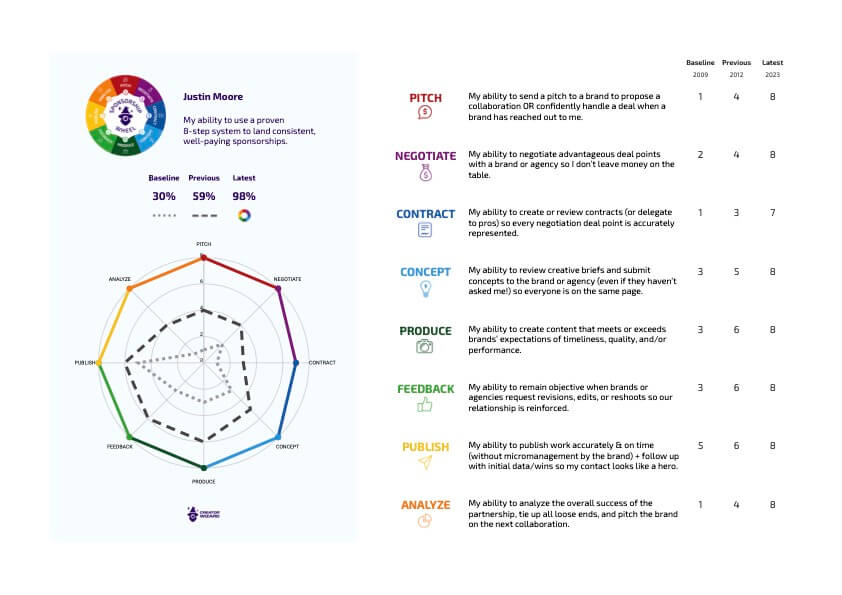
You can take the Sponsorship Wheel Snapshot for FREE here.
Thanks for reading, and best of luck with your next sponsorship!
— Justin
The post How Creators Make Consistent Income with PAID Sponsorships appeared first on Smart Passive Income.
]]>This is a guest article by Brian Casel, founder of ZipMessage, a tool for consultants to swap messages with clients using video, audio, screen, or text, all asynchronously in one easy-to-use conversation thread.
The post How to Scale Client Services Using Asynchronous Communication appeared first on Smart Passive Income.
]]>Whether you work as a freelance consultant or a manager at a digital agency, people are at the heart of what you do. Helping clients solve problems, expand their business, and navigate new territory is all part of the service you provide.
This requires clear, consistent, and collaborative communication. (After all, they’re paying you the big bucks to get access to you.)
Unfortunately, because your clients value your expertise and often want more face time, your business likely takes a backseat. When you’re busy with back-to-back Zoom calls and catching up on Slack it’s challenging to grow your business or scale your services.
But it doesn’t have to be like that.
Today I’m going to talk about a delightfully different approach to communicating with clients (that will save you both time!): asynchronous communication. I’ll elaborate on the problem it addresses, why it’s an effective solution, and how to shift your client workflow to take full advantage of it.
The Problem: Too Many Live Calls (It’s Draining!)
At first glance, having a calendar packed with client meetings seems like a good problem to have. More calls mean plenty of business, and more business means more money in the bank.But a large volume of live calls each week also comes with some significant downsides. Here are the big three:
1. Your Mental Health Takes a Nosedive
Have you ever heard of meeting fatigue? Spending hour upon hour in meetings and calls isn't just tiring; it's exhausting.
Zoom fatigue can wreak havoc with your emotions and significantly impact your mood. As a result:
- Your concentration dips.
- Your critical-thinking and problem-solving skills take a hit.
- Your stress levels soar.
And these adverse effects can ultimately impact your client communications, too; when you're feeling tired and groggy, clarity can suffer.
- You might not have the patience to explore solutions and provide explanations properly.
- You may overlook essential facts and miss out on vital details.
- Your memory can suffer.
This can be a great source of frustration for you and your clients.
2. Your Physical Health Deteriorates
As you know, spending too much time in front of your laptop (without proper breaks) is unhealthy. But the problem is, how do you make time to take meaningful breaks with so many call commitments? Sitting in one position for too long, like at your desk while discussing brand strategy with a client over Zoom — can cause a wide range of health problems:
- Back pain
- Muscle fatigue
- Achy joints
- Dehydration
- Eye strain
- Headaches
- Weight gain
(To name a few)
Plus, when your mental well-being suffers and your brain feels frazzled, it often shows up in your appearance. If you’re hoping to present a professional front to your clients and coworkers, the face of exhaustion staring back at them through a screen is less than ideal.
3. Your Business Goals Suffer
As well as adverse health effects, too many calls can harm your business long-term. It just isn’t sustainable.
Consider what might happen if you drop the ball or start under-delivering. If your clients decide to go elsewhere, they’re not just taking their money with them but a piece of your professional reputation too.
Plus, when you’ve run out of hours in the day, it's impossible to focus on other areas of your business:
- Research projects
- Attending professional events
- Expanding on your area of expertise
- Creating an online course
All your big, bold business goals go unmet when you spend your energy working on other people's projects.
This brings us to the crucial question:
How can you offer consistent, high-quality, on-demand knowledge and advice to clients without neglecting your health and business?
The Solution: Scale Client Services with Asynchronous Communication
In short, asynchronous communication involves discussions and conversations that don't occur in real-time.
Sounds fancy, right?
Async communications have been around for a surprisingly long time. Our ancestors used cave paintings to communicate with each other and grab the attention of anyone passing. People then responded in a similar artistic fashion, almost like ancient graffiti, only with more purpose.
Carrier pigeons, foot messengers, telegrams, and postal services followed, with the later addition of more modern messaging tools.
Today, everyday async communications include:
- SMS, MMS
- Messaging platforms such as Slack and Microsoft Teams.
- Messaging Apps: WhatsApp, Facebook Messenger, WeChat, Line, and Telegram
You almost certainly use some form of async messaging tool already.
But, which is the best for scaling client services?
Asynchronous Messaging with Video
The beauty of async messaging is that it removes the need for everyone to be present online simultaneously.
You're probably all too familiar with trying to set up online meetings involving several people spread across different time zones. It’s a nightmare.
Async video messaging provides the same benefits as in-person or virtual meetings; they’re just not live. And rather than simply using text-based or voice messages, video async messages offer excellent opportunities to communicate with your clients.
You can still:
- See and hear each other
- Share ideas effectively
- Ask detailed questions
- Discuss ideas
- Provide in-depth information and explanations
Complete with all the voice inflections, gestures, and visual aids of real-time communications.
Your clients are busy people, too. They, too, can benefit from the flexibility that async solutions provide. Instead of sitting in meetings all day, you are allowing them to focus on more pressing priorities (like implementing your suggestions and putting your knowledge to good use!).
At ZipMessage, we’ve built the perfect tool for this async-first communication approach.
ZipMessage: An Async-First Messaging Tool for Consultants & Coaches
ZipMessage lets you give clients a dedicated conversation thread where they can send and receive messages with you asynchronously.
And you have the option of using video (screen recording or camera), audio, or text.
The beauty of ZipMessage is in its simplicity. Sharing a ZipMessage thread is as simple as sending a client a link; that client can then record or type straight into that web page without installing special software.
It’s easy to use and has a clean, professional layout.
Major Benefits:
- It’s better than email — it's a quiet, dedicated space for just you and your client. No noise.
- It’s better than chat apps like Voxer and Whatsapp — those offer too much access to you with no control over when (and how long) clients can keep sending you messages.
- It’s better than video recording tools like Loom, CloudApp, and others — those are one-off, one-way, easily lost, and forgotten messages.
ZipMessage is designed for back-and-forth threaded conversations that are easily stored and referred to in the future.
Key Features:
- Message recording using video, microphone, and text for both you and your clients.
- Screen-sharing capabilities.
- Threaded conversations are displayed on one page, removing the chance of messages being lost in a non-stop chat app or a crowded inbox.
- Syncs with email, enabling you to keep important communications in one place, wherever they originate from.
- No need for clients to install special software.
- Incredibly easy to set up and use.
ZipMessage is user-friendly, effective, efficient, personable, and practical. With various options to suit communication styles and needs, what more could you want?
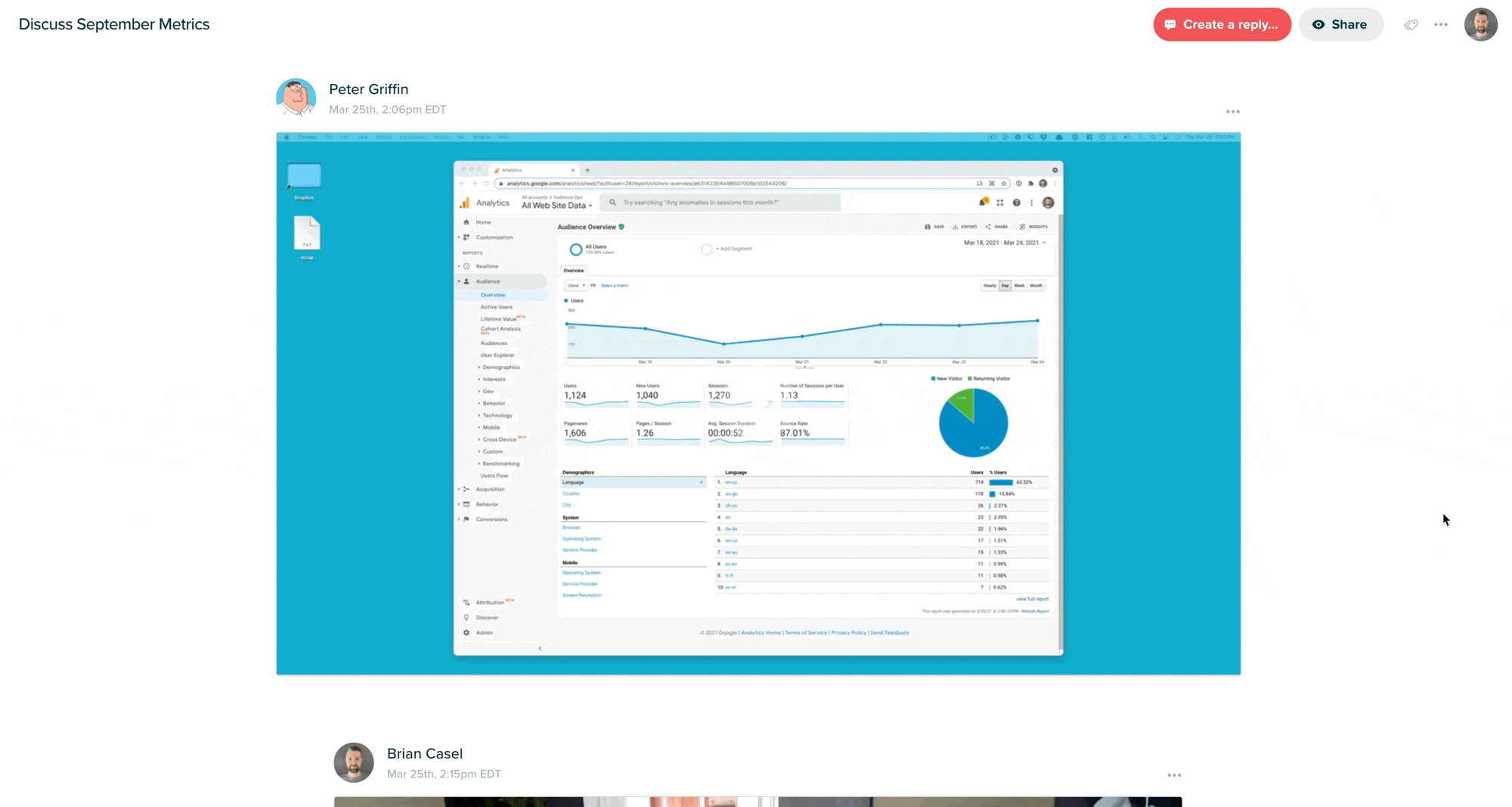
How to Shift Your Client Communication to Asynchronous Methods
Okay, we’ve covered the problem, the solution, and the tech. Now, you're perhaps wondering how to switch to more async communication methods with your clients.
Well, whether you’re onboarding someone new or encouraging a long-term retainer to make the shift, these four tips can help make it a breeze:
1. Give Clients a Preview and Walkthrough in Real-Time
During a live consultation, send your client their first video message.
This sets up the initial communication thread. While speaking in real time, explain how to use ZipMessage. Then, ask them to send a reply.
Walking clients through a new process step-by-step, and performing a live demonstration will get them feeling confident and comfortable using async tools. Keep them informed to keep them engaged.
2. Propose an Async Option for a Piece of the Process
At the end of a live meeting, propose using async messaging for feedback and follow-ups outside of longer consultancy meetings.
This gives your client a dedicated space to converse with you. Start the conversation, and provide your notes and feedback from the call. Urge them to reply if they need to.
You don’t have to make all your meetings asynchronous; you can simply change one part of your process to free up that time.
3. Show Your Work
Before replying to messages from clients, jot down key ideas and information to keep your messages on point, brief, ordered, and relevant.
Record your screen as you write your notes so your clients can see them. This illustrates how they can create their replies and gives them an example to use. Plus, notes help to demonstrate to a client that you've given the issue prior thought and approach your consulting work with professionalism and dedication.
4. Scale Client Requests with Video Intakes
When clients want notes or feedback, videos can often clarify details more effectively than emails.
Furthermore, it's human nature to pay more attention to a recorded message — the temptation to quickly skim through words on a screen is all too real for most!
ZipMessage makes it easy to direct clients to a video intake page. From there, they can easily record a message and send you a request.

Async Communication = Smarter Business
Asynchronous communication with video messaging can be a game changer when scaling your client services.
It gives you the power to:
- Focus
- Take back control of your day
- Give clients their valuable time back
- Communicate more effectively
- Offer new services
- Reach high-value clients
If you're looking for a simple way to get clients onboarded with an async messaging channel, give ZipMessage a try for free.
Don't forget to send me your feedback and shoot me a “ZM” at ZipMessage.com/brian. Are you excited about scaling client services (and reducing meetings) with asynchronous messages? Sign up for ZipMessage now!
The post How to Scale Client Services Using Asynchronous Communication appeared first on Smart Passive Income.
]]>Freelancing is the number one way to get started with online business. Here's why, plus how you can make more money doing it and transform your side hustle into a full-time, scalable business.
The post How to Start Freelancing (And Get Your FIRST Client!) [Updated May 2022] appeared first on Smart Passive Income.
]]>The SPI community has been asking about the world of freelancing a lot lately, so I thought I’d share some recent thoughts on freelancing to guide you in how to get started freelancing (and get your first client).
But first, I want to take you back to a post I shared in November 2017:
The 2 Quickest Ways to Generate an Online Income
In that post, I explain that freelancing is one of the two quickest ways to generate online income (the other is affiliate marketing). Freelancing allows you to quickly get paid for a task that can actually help solve problems for people.
And when you’re first starting out, freelancing is the number one way to get started online. It’s not passive income, which is an important thing to understand. Freelancing is definitely not passive; it’s super active. If you don’t do the work, you’re not going to get paid. But if you are dedicated and put in the effort, freelancing is a great way to get your foot in the door of an industry or niche you’re interested in. It’s, quite simply, a great way to get started in business.
After all, think about this: You just need one client. One client to make a little money. One client to get the ball rolling. One client to make a difference. And then, as you’ll hear me talk more about later in this post, you can take what you learn working with clients, and turn it into something more passive—with tools, or even a team! But first, let’s figure out how to get that first client.
Let’s get started!
What Is Freelancing, and Why There’s Huge Opportunity in Freelancing
I think it’s important first to define what freelancing is. Freelancing is, at its core, offering a skill you have in exchange for payment. If you have a skill a particular client or brand or business needs to help them solve their problems, they will want to hire you to solve it. And you do so with your specialized skill.
The cool part about freelancing is that there are so many different types of freelancers out there, offering up a huge range of skills. Even if you don’t have that skill right this moment, who says you can’t learn it and eventually offer up that skill too?
Here’s just a sampling of some of the types of freelance skills out there:
- Graphic design
- Photo editing
- UI design
- UX design
- Video editing
- Video production
- Voice acting
- Web design
- 2D animation
- 3D animation
- Ajax development
- Java development
- API development
- HTML development
- WordPress development
- Administrative support
- Email tech support
- Virtual assistance
- Transcription
- Data entry
- Academic writing
- Copywriting
- Copy editing
- Proofreading
- Editing
- Creative writing
- Ghostwriting
- Translation
- Accounting
- Bookkeeping
- Business analysis
- Quickbooks
- Excel
- Advertising consulting
- Google AdWords
- Marketing strategy
- SEO
- PPC
- Lead generation
And that’s just a small portion of the types of freelance skills available on the market. That’s a huge benefit when it comes to starting out in freelancing. You probably have a few of those skills already. And even if you don’t, you know that there’s a big opportunity for you to build your base of skills for your future clients.
Another benefit of freelancing is that it empowers you to enter a particular business space, get to know the people in there, and learn the ins and outs of that specific business type or industry. You may be hired for a specific skill, but you (or them or both) soon realize that there are other opportunities that you see, other areas where you can benefit the business.
In SPI Podcast session 460, Jay Clouse joins me to talk through an easy way anyone can get starting freelancing. Listen to it here:
How to Get Your First Client (and Why You Just Need One Client!)
Once you have your own client, the road ahead gets a little easier. Don’t get caught up in thinking you need ten clients out of the gate. You just need an audience of one to start.
To help guide you through what that’s like, I had a chat with Charli Marie of CharliMarieTV.
In the video (embedded below), Charli, a successful freelance designer, shares essential tips for how to get your first freelance client, best practices for working with that client to make sure that it’s a great experience, and advice for making sure you get paid on time.
Once you have your first freelance client, how do you start making more money? In the second video in my freelance series, I continue my conversation with Charli Marie on the topic of:
5 Ways to Make More Money (As a Freelancer & Entrepreneur)
So, you have your first freelance client. Now what? How do you start making your freelance life fruitful? There are many ways you can start making more money as a freelancer and entrepreneur, but we’re going to focus on just five ways for now.
1. Start building a reputation
As Charli says, building up your brand and getting your voice out there allows you to be “known for your craft.” A few great mediums to make yourself known is a blog, YouTube channel, and podcast—all platforms I use to build and grow my brand and reputation. The more you put out there, the more useful and relevant content and information you share with people online, the more you’re going to look like an expert in your particular craft or skill.
2. Have a good process in place
Know your process, and know it well. A good process means that you have an organized system and way to work with your clients from the start, the middle, and the end. If your process is non-existent, it’s just a disorganized mess, the less likely your clients are going to want to continue working with you, and probably won’t recommend you to their friends.
3. Serve the clients you already have
It can be tempting to want to always go after new clients, or to land the next great client. But when you’re too focused on new clients, you’re often forgetting about the clients you are already serving. Focus on your existing clients and the ways you can improve your service to them.
4. Upsell in an authentic way
Upselling can be tricky, and in some cases has a bad reputation. But here’s how Charli does it for her freelance clients: a tier-based approach:
- Tier 1: You do the basic work to meet the client’s stated need
- Tier 2: You meet the basic needs of the client, but also provide additional value
- Tier 3: You have a solution for the stated needs of the client, but then you also offer an additional service based on your review of the client’s situation and your experience
5. Increase your prices
Most freelancers undervalue or underprice themselves when they’re first starting out. It’s an easy thing to do because you’re just doing everything you can to get your foot in the door. But it doesn’t have to be that way—especially if you have your one client. Focus on what you do and your value.
For an extended look at more ways you can make money as a freelancer, check out my video with Charli Marie below!
Now that you’ve started freelancing, what’s next?
Freelancing, THEN WHAT? Career & Biz Options for Freelancers
As a freelancer, you’ve probably felt the pull to do more in your career. It’s totally natural. And so in this final section of this post, I am going to share a few ways you can expand on your freelance career and business. (And don’t forget to watch the video below for the full deep dive into your many options—with Charli Marie and Caleb, my videographer!)
1. Freelancing can transform into a full-time job
In the video, Charli shares how she got her first full-time design job after doing some design work for a company. If you do good work for your clients, and you have a good relationship with them, that’s a potential opportunity if the client is looking for a more long-term, stable solution.
2. Your side hustle can transform into a full hustle
Caleb, my videographer, used to work at Fizzle doing video work. He loved that part of his full-time job so much that he set out doing videography as a side hustle. And that side hustle is now a full-time hustle! In the video below, Caleb shares how he prepared for that transition, and how he masterfully worked his way to a successful videography business owner.
3. If you want to scale, you have to hire people
I know this very well, as I tried to do everything myself for a while before realizing that I needed to bring in a team to free me up to do bigger and brighter things for Smart Passive Income. The same is true for Caleb’s business. He wanted to grow and push the limits, and he realized he couldn’t take that journey alone.
And if you want to hear the story of my very own first hire—and why I tried really hard to avoid it—then give SPI 474 a listen.
Make sure to check out the full video below for an extended conversation about career and business options for freelancers!
Before I go, make sure to also check out SPI Podcast Session 158 with my guest Brian Casel, who shares how to productize your service-based business—a great lesson for freelancers like yourself.
Brian returned in episode 314 to share how to turn your service-based business into a product, or into something that can be scaled and automated, so check that out, too. (Don't forget to subscribe to the SPI Podcast!)
And don’t forget to subscribe to my YouTube channel for instant access to my weekly videos!
Again, you can check out the full Freelance Video Series below:
Happy freelancing!
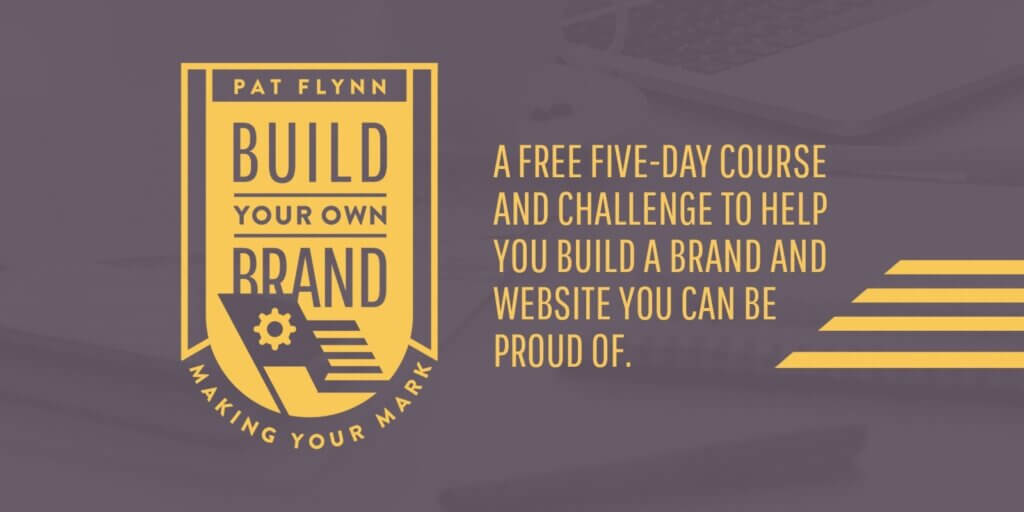
Click here to take my free Build Your Own Brand challenge.
The post How to Start Freelancing (And Get Your FIRST Client!) [Updated May 2022] appeared first on Smart Passive Income.
]]>Identity theft is a big deal, and it can make your life (and your business) a mess. Here's how to deal with it.
The post How Identity Theft Can Stop You & Your Business in Its Tracks appeared first on Smart Passive Income.
]]>A lot of people think identity theft won’t happen to them. But it's a real threat that’s gotten worse in recent years, and one you—and your business—can’t afford to ignore.
Table of Contents
- What Is Identity Theft?
- Don’t Ignore the Threat of Identity Theft
- What To Do Right Away If Your Identity Is Stolen
- Be Proactive—Stop Identity Theft Before It Happens
Note: This post contains affiliate links, which means we make a small commission if you make a purchase after clicking the link.
What Is Identity Theft?
Identity theft is when someone uses your personal or financial information to pose as you so they can make purchases, open financial accounts, and commit other kinds of fraud that benefit them.
Identity theft can take numerous forms—over thirty —that can make your life a misery.
Bad actors can open loans and credit cards in your name, file taxes and receive refunds, or obtain medical services in your name, just to name a few.
And it’s a growing problem.
In 2020, 47 percent of US consumers experienced identity theft; 37 percent experienced application fraud (the unauthorized use of one’s identity to apply for an account), and 38 percent experienced account takeover (unauthorized access to an existing account).
Losses from identity theft cases cost $502.5 billion in 2019 and increased 42 percent to $712.4 billion in 2020!
This massive increase was due to changes in the way people banked during the pandemic (online, at home), as well as an increase in remote lending by banking institutions.
Don’t Ignore the Threat of Identity Theft
To be honest, we haven’t talked much about identity theft before here at SPI. And you might be thinking, what does identity theft have to do with starting and growing a business?
A lot, in fact.
You see, if caught early, identity theft can be manageable. But if not, resolving it can take years to stop the fraud, undo the damage, and restore your identity and credit.
This can obviously be incredibly damaging if you’re trying to grow a business. The time, energy, and money going toward addressing identity theft is not being spent on building your business.
The bottom line: this is not a threat that you—or your business—can ignore.
What To Do Right Away If Your Identity Is Stolen
What should you do as soon as you find you’ve been the victim of identity theft? There are several steps you should take right away.
Step 1: Contact the Companies Involved
Call the companies where you know fraud has occurred. Explain that someone stole your identity, and ask them to close or freeze your accounts. Then, change the logins, passwords, and PINs for your accounts.
Step 2: Contact the Credit Bureaus
Place a free fraud alert with one of the three credit bureaus, and get your credit reports.
You can contact any of the three bureaus; that company must tell the other two:
- Experian: Experian.com/help or 888-EXPERIAN (888-397-3742)
- TransUnion: TransUnion.com/credit-help or 888-909-8872
- Equifax: Equifax.com/personal/credit-report-services or 800-685-1111
You should also get a copy of your free credit reports from each of the three bureaus at AnnualCreditReport.com or call 1-877-322-8228.
Review your reports, and make note of any account or transaction you don’t recognize. This will help you report the theft to the FTC and the police.
Step 3: Report Identity Theft to the FTC
Next, file a police report with your local police department. You should also report your identity theft at IdentityTheft.gov, a one-stop resource the federal government created for identity theft victims. Enter as much information as you can, and the site will help you create a recovery plan.
Be Proactive—Stop Identity Theft Before It Happens
It’s crucial to know what to do in the immediate aftermath of identity theft. But there’s more you can do proactively to make sure it doesn’t sabotage your life or cripple your business.
That’s where an identity theft protection service comes in.
Aura: The All-in-One Digital Protection Solution We Recommend
We like Aura, a tool that provides all-in-one digital protection for consumers. Aura offers identity theft and fraud protection for your finances, personal info, and family, including:
- Identity Theft Protection. Aura lets you know if your online accounts, passwords, Social Security Number, and bank accounts are at risk, and assigns a dedicated identity theft and fraud specialist to assist you.
- Financial Fraud Protection. Aura sends rapid alerts if it detects changes to your credit or bank accounts.
- Device & Network Protection. Stream, shop, and bank online privately and securely with military-grade encryption and powerful antivirus protection.
- Family Protection. Keep your spouse, kids, and parents safe from identity theft, fraud, scams, and online threats.
Aura offers three plans:
- Individual: includes an antivirus, VPN, password manager, identity theft insurance, ID monitoring, and financial fraud monitoring for one adult using up to ten devices
- Couple: includes everything in the Individual plan, plus additional insurance coverage and device limits for two adults
- Family/Group: includes everything in the Individual plan, plus additional insurance coverage and device limits for up to ten adults
Aura was also designed to be easy to understand and simple to set up. And we appreciate that it includes 24/7/365 customer support.
You can get your first 14 days free on any Aura plan with our affiliate link. Check out this infographic showing what you’ll get with each of Aura’s three tiers of service:
Go to https://www.smartpassiveincome.com/aura to get your first two weeks free with any Aura plan—and sleep a little better at night.
The post How Identity Theft Can Stop You & Your Business in Its Tracks appeared first on Smart Passive Income.
]]>This fall, our team got together in Denver. Yes, in person! Here are the five most important considerations that went into planning and executing our 2021 team meetup.
The post The Five Keys to a Successful Team Retreat in the Age of COVID appeared first on Smart Passive Income.
]]>As you may know, Team SPI is completely remote! This means we don't often get the chance to get together in person—except for our annual summits. During the challenging last ~two years of COVID, that in-person experience has been… hard to come by. That’s why this past summer, with vaccines finally a reality, SPI leadership felt it was important for morale and planning to get our whole team together in person safely if we could.
I'm Sara Jane Hess, and I am the senior production manager at SPI. It might seem odd that a production manager is talking about planning a team summit, but once upon a time I was the operations manager and planned several of our past in-person events. When our previous operations manager announced she was leaving, I stepped in to help plan this year's summit and get all the details in place. This included finding and booking venues, restaurants, and activities, amongst other things.
In this post I’ll share the five biggest considerations that went into planning and executing what was ultimately a fun and successful retreat. I hope it’s helpful for you if you’re thinking about putting together your own in-person event for your remote team, especially in the era of COVID.
Table of Contents
- Pick a Great Location (We Chose Denver)
- Make Sure You’re COVID Safe
- Make the Most of Your Working Time
- Eat Some Great Food
- Have Some Fun
1. Pick a Great Location (We Chose Denver)
We considered a few different locations for hosting our retreat, including Columbus (where Matt lives) and San Diego (where Pat lives), but we ultimately decided to go with Denver, Colorado (which also happens to be where I live).
We chose Denver for a few reasons, but the main one was that it was a more central location for all members of the team, given that three of our team members live in Denver or within a 90-minute drive of the city.
Choosing a place where employees already live isn't a must, but it's a nice-to-have for a few reasons:
- It makes planning for venues and restaurants easier as local employee(s) will be able to make recommendations.
- It allows the team to get to know the hometown of their fellow employee(s).
- It cuts down on some costs since local employees won’t need hotel rooms, flights, or airport transportation.
Again, having employees already living in your chosen destination is a nice-to-have. Once you’ve selected your city, you need to find a venue to host your team—a home base for all the activities of the retreat.
Why We Went with a Hotel
In years past we’ve had our team stay at large Airbnb houses. But because of the number of people on our team, we’ve required at least two Airbnbs, which adds complications like proximity to each other, who stays where, delegating a suitable common area for people to hang out during non-work times, making sure both Airbnbs are close to restaurants/other attractions… the list goes on.
We’ve had all those challenges with past summits, so this year we decided to use a hotel. I felt that it made more sense to keep everyone in the same place, give them their own private space, and still have them within walking distance of restaurants and attractions. Finance-wise, once the cost of multiple Airbnbs and additional meeting space are added up, they generally become comparable to a hotel.
Here are a few key things to keep in mind when selecting a venue:
- Accessibility to the airport and other areas of interest.
- The venue should be nice—clean and comfortable with public gathering spaces (like a lobby, terraces, and/or rooftop deck).
- Cost. It needs to be affordable, obviously. We set a goal for the price range we wanted to stay within, then negotiated the price with the hotel, which was able to keep us in that range.
- Multiple offerings/uses in the same venue. For us, this was renting a conference room in the same hotel as the team was staying at. This allowed us to bundle costs, which allowed us to get a better rate for hotel rooms and the conference room, and allowed us to be in a location that limited exposure to people outside our group (and therefore COVID).
Speaking of COVID safety, our choice of venue was guided in large part by the need to keep the team safe while traveling and meeting up during a global pandemic. Let’s talk a little bit more about what we did to reduce our risk.
2. Make Sure You’re COVID Safe
I'm really hoping we won't have to consider this in future years, but a lot of planning time went into making sure that we minimized our COVID risk during the trip. There were two main ways we did this: by requiring team members to be vaccinated, and picking a venue that would reduce people’s overall exposure.
COVID Safety: Vaccination
We required that anyone who attended was vaccinated and could provide proof of vaccination.
We also made it very clear why we were requiring proof. It wasn’t because we didn't trust people, but because we wanted to build trust among the team that we were trying to take care of each other as much as possible.
Those considerations went into choosing restaurants as well. I called all of the restaurants we ended up eating at ahead of time to make sure they had COVID policies in place like masking and distancing, and in some cases required vaccinations of customers or staff. We also ate outside whenever we could. That was a little tricky with the weather, but overall it went smoothly—and most importantly, no one got sick.
COVID Safety: Location
As I was planning the summit, I tried to minimize the number of locations our team would need to visit. So, we picked a hotel that was centrally located in the city, close to Union Station where everyone would be arriving and departing from. The hotel also had a conference room on site that we could use.
This accomplished a few different things. First, it gave people more time, especially in the mornings and the evenings before dinner, because they didn't have to travel very far to attend meetings—essentially, just an elevator ride. It also kept them from coming into contact with a lot of different people.
The location we’d originally considered for our work time during the summit was a really cool coworking space that in normal times would have been perfect. But I’d been to that location before and knew that it was a maze of offices with a lot of people crammed into a small area. I knew that if our team met there, we would be coming into constant contact with any of the few hundred people who might be working out of there on a given day.
I felt it wasn't a risk that was worth taking, so we consolidated everything to the conference room of the Rally Hotel. This ended up being a perfect solution because we were within walking distance of not only Union Station, but also some really great restaurants and bars.
I was really pleased with how it turned out —and I think the team was too. If we ever do another summit in Denver, I would definitely consider following this same game plan.
Related Reading: “5 Ways Entrepreneurs Can Conquer Loneliness and Feel More Connected“
3. Make the Most of Your Working Time
Our team has the benefit of having run several in-person retreats in the past, and we’ve seen what works and doesn’t when it comes to the schedule and format of the business portion of the event. This year we tried a slightly different format from past years, and I think it was a success.
Our summit ran Monday to Friday, and Tuesday and Wednesday were devoted to working time. We typically use these working sessions to recap the year and start planning for the following year.
This year, Matt recognized that in past years we hadn’t accomplished as much business planning as we wanted to in these sessions. This was in large part because a lot of our meeting time typically involved leadership presenting to the team.
To counter that, this year we tried to “democratize” things by having each subteam (marketing, production, solutions, and leadership) run their own portion of the meeting to identify problems and opportunities in their respective areas. We also made these sessions interactive, so the whole team was involved in brainstorming ideas and solutions for each area of the business.
Scheduling was also important. It’s also difficult to carry the attention of the entire team for a long period of time, so we broke up the schedule with different activities and some downtime.
So what format should you choose for the business portion of your next retreat? It’s all about knowing your team and the goals you have for your time together so you can make the most of it. The best format is not going to be the same for every team, so my advice is to consider what’s worked (and not worked) for your team before.
4. Eat Some Great Food
Another challenge for us was finding restaurants that appealed to everyone. Our team includes people with dietary restrictions for gluten and dairy, as well as a vegan. So it was quite the process to go through and find restaurants that offered those options and also had a larger menu so everyone could find something they liked.
Thankfully, with Denver being a diverse culinary city, it wasn’t too difficult to find those kinds of restaurants. It had been a struggle in the past in other cities, but Denver offered a good spectrum of dining options. As a plus, I didn’t feel like any two meals or menus were the same, which has not always been the case.
What’s the key to a successful dining experience for your whole team? The main thing is just doing a ton of research. Talk to locals and find out what their favorite restaurants are. Also, for the people on the team with dietary restrictions, I presented the restaurant options to them first and had them give the okay before I announced the options to the entire team.
5. Have Some Fun
Especially after the past almost two years we’ve all been through, it felt super important to enjoy our time together. It’s important to plan in some time that doesn’t require much brainpower and allows people to get to know each other a bit more. In addition to our dinners out, which were great for team bonding, in the evenings some people did karaoke on the hotel’s rooftop deck, and one night we visited a “barcade.” We also took a whole day to visit Rocky Mountain National Park and had a great time hiking and picnicking.
One of my favorite parts of planning summits is to come up with gifts for folks on the team. It’s a lot of fun to figure out what people might enjoy and use again and again that would also remind them of our time together as a team.
In past years we've done tote bags filled with T-shirts, stickers, and pins. We kept with that theme this year, but we also gave some gifts that would come in handy during the trip, especially since we had a lot of people coming to Denver (5,280 feet above sea level) from lower altitudes. First-time visitors to the city (which several teammates were) don't always think about the importance of adapting to the altitude, as well as the high levels of sunshine.
So things like water bottles, sunscreen, and chapstick were excellent additions to the gift totes we gave everyone. They're all not only great gifts, but actually benefit the team and their health, especially in the first few days as they’re adjusting to the climate and terrain.
An In-Person Retreat Is a Lot of Work—But It’s Worth It
As you can imagine, a trip like this is a lot of work to plan and pull off.
It’s also definitely a large monetary expense. I was conservative in my budgeting and gave extra buffer to things like meals, which paid off since we came in under budget (which had never happened before!). And thankfully the payoff, which is measured mostly qualitatively, has always been worth it.
Also, knowing how much to plan is a balancing act. I tried to plan for as many things as felt appropriate, while also leaving time for chaos as team members' personal preferences (like after-dinner activities and non-team meals). If you plan every single detail, the whole event can feel constrained and inflexible, which is never fun, so I try to only plan what I need to.
As for unforeseen hurdles, there really were not many, which was a little shocking. One that comes to mind is one of our team members joining virtually. It worked mostly well, with hiccups from a sometimes poor internet connection, and it was hard for her to hear teammates talking in the conference room. Beyond that, though, everything ran incredibly smoothly.
I hope this post was interesting and helpful if you’re thinking about planning your next—or first—in-person team retreat. I might go into more detail on how to plan and successfully pull off a team event in a future post, so stay tuned!
The post The Five Keys to a Successful Team Retreat in the Age of COVID appeared first on Smart Passive Income.
]]>Setting up your business may seem simple—until it's time to pick a legal structure. Do you keep things simple as a sole proprietor, or go the corporation route? Guest author Arjun Mahadevan of Doola covers the benefits and disadvantages of an LLC so you can figure out if it's right for you.
The post The Benefits and Disadvantages of an LLC appeared first on Smart Passive Income.
]]>This is a guest post by Arjun Mahadevan of Doola, a “company-as-a-Service” platform to form and launch your US business from anywhere.
Picking the right legal structure can be one of the most daunting steps in starting a business. You’ve got your idea, and you’re ready to start serving clients, but you need to make sure you’ve got all the right things in place legally to move forward. It seems simple until you start looking at the different structures and questioning which one to choose. Should you keep things simple as a sole proprietor, or do you need a corporation?
One of the best ways to find a middle ground and benefit from your legal structure is to choose an LLC. In this post, we’ll explain exactly what an LLC is, explore the benefits and disadvantages of an LLC, and help you decide whether or not an LLC is the right business structure for you.
What Is an LLC?
An LLC is a limited liability company, which means that the business owner(s) have some legal distance from the business itself. That means that should the LLC get into a legal battle (like getting sued) or financial difficulty, the owner’s assets are protected.
This makes an LLC one of the best and most popular business structures, especially for small businesses. An LLC is a little different from the other four major business structures (sole proprietor, partnership, S-Corp, C-Corp) because it combines the best features of those structures with the LLC's added protections and benefits.
So, if it’s so popular, why doesn’t everyone form an LLC? An LLC isn’t right for everyone, so let’s take a closer look at the benefits and disadvantages of an LLC.
What Are the Benefits of an LLC?
There are five main benefits of forming an LLC.
1. Member (Owner) Asset Protection
The main reason people choose to form an LLC is for the liability protection it offers. “Limited liability” means that the owner(s) of the LLC (called “members”) are not personally responsible for any financial debts or problems the LLC encounters. That means that if something happens that your business would struggle to recover from financially, you cannot lose your home, your savings, or any other assets you have.
2. Protection Without Complexity: Pass-Through Taxation
Another great reason to choose an LLC is that it offers limited liability without making your business unnecessarily complicated. For example, you can form a single-member LLC instead of a sole proprietorship, which would give you limited liability, though you would still file your taxes as if you were a sole proprietor. LLCs are viewed as “pass-through entities,” which means they are not taxed in their own right on a federal level.
3. Protection Without Complexity: Administration
LLCs also offer limited liability without the administrative complexity of being a corporation, such as boards and shareholder meetings, directors, and so on. Even when you are running a corporation with few people, you still have to create and keep all these documents.
4. You Can Choose How You’re Taxed
LLCs can be taxed in the same way as any of the other business structures. When you form an LLC, you can elect to be taxed in the way that gives you the most benefits for your circumstances. As we mentioned above, you could continue to be taxed as a sole proprietorship if that works best for you. However, if you’re making a significant amount, it can work in your favor to be taxed as a corporation.
5. An LLC Makes Your Business Trustworthy
Depending on your industry, goods, and services, some customers will find you more trustworthy as an LLC than if you’re operating as a sole proprietor or partnership. It shows that you’re serious and can reassure customers that you’re not going to disappear overnight.
What Are the Disadvantages of an LLC?
An LLC isn't all upside, however. There are two big disadvantages to using an LLC structure for your business.
1. An LLC May Be More Expensive
In most states, it costs very little to get a business license and start operating as a sole proprietor. However, LLCs often cost more to establish and maintain. Many states have an annual fee or tax for LLCs, which is around $100 in most states, though it's $800 in California, and some charge additional fees for profitable LLCs. Again, California is the most costly state to be in, with fees for LLCs making over $250,000 ranging from $900 to $12,000 depending on how much income you make in California. This won’t be a concern for most, and the highest fees are for businesses making over $1 million, but it's something to research and keep in mind.
2. LLCs Don’t Work Well If You Plan to Go Public or Find Angel Investors
LLCs work amazingly well on a personal level, but if you plan for your business to have meteoric growth, perhaps through angel investors or venture capitalists, it will likely be in your best interest to form as a corporation. If you plan for your business to go public relatively soon (so your shares can be bought on the stock market), you should also think about incorporating.
Do You Even Need an LLC?
Forming an LLC isn’t that complicated, but there are more responsibilities than if you were to form a sole proprietorship or partnership. That may lead you to wonder if you really need an LLC, especially if you’re just starting out. Here are a few questions you need to answer to find out if an LLC is right for you:
Am I working solo, or with others?
If you’re going to be working with a partner or multiple partners, an LLC will always be best. It will take you thirty seconds to find a partnership horror story online, and you definitely don’t want to become one. Sure, some people really can work together well for decades, but why risk it? You can have all the same benefits as a partnership with an LLC, and the LLC will mean you can’t be liable if your business partner makes a bad decision (and vice versa).
Am I at risk of being sued?
These days, getting caught up in a lawsuit isn’t as uncommon as you might think, especially once your business finds success. Think seriously about whether someone could come after your business—it’s not likely, but it can happen. If you have a physical store, you give legal, business, health, or financial advice, or you work on people’s most valuable assets, it’s almost certainly worth forming an LLC.
There’s one caveat here: Some states won’t allow you to do this if you’re a licensed professional. In that case, consider forming a professional limited liability company or corporation instead.
Is this a side hustle?
If you are planning to only make a little money on the side, then you may not need to form an LLC just yet, especially if the fees in your state will eat significantly into your profits.
Forming an LLC will be the right decision for most since it protects personal assets. You only need to think twice if you might be better off forming a corporation now, or if you live in a state where maintaining an LLC is costly, and you don’t forecast your income to be large for the first year or two of your business. Remember, you can always form an LLC later on, and if you’re ever in doubt, consult a local accountant.
Learn More about LLCs
Check out the resources below to learn more about LLCs and the necessary groundwork for starting a business:
AP 0542: Why Did You Start An LLC? – Smart Passive Income
AP 0329: When Do I Need to Set Up an LLC? – Smart Passive Income
The Details Behind Starting an LLC For Your Small Business – Part 1
The Details Behind Starting an LLC For Your Small Business – Part 2
How to Start a Business Built to Endure – Smart Passive Income
The post The Benefits and Disadvantages of an LLC appeared first on Smart Passive Income.
]]>